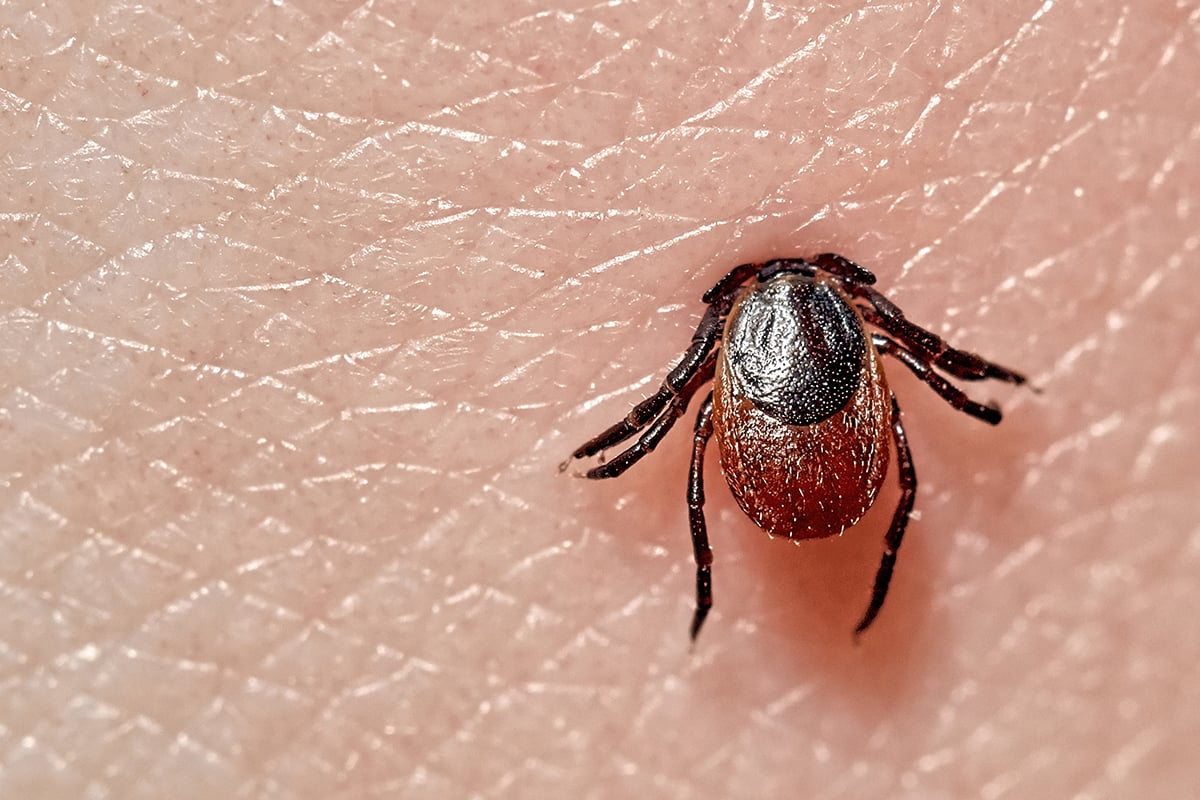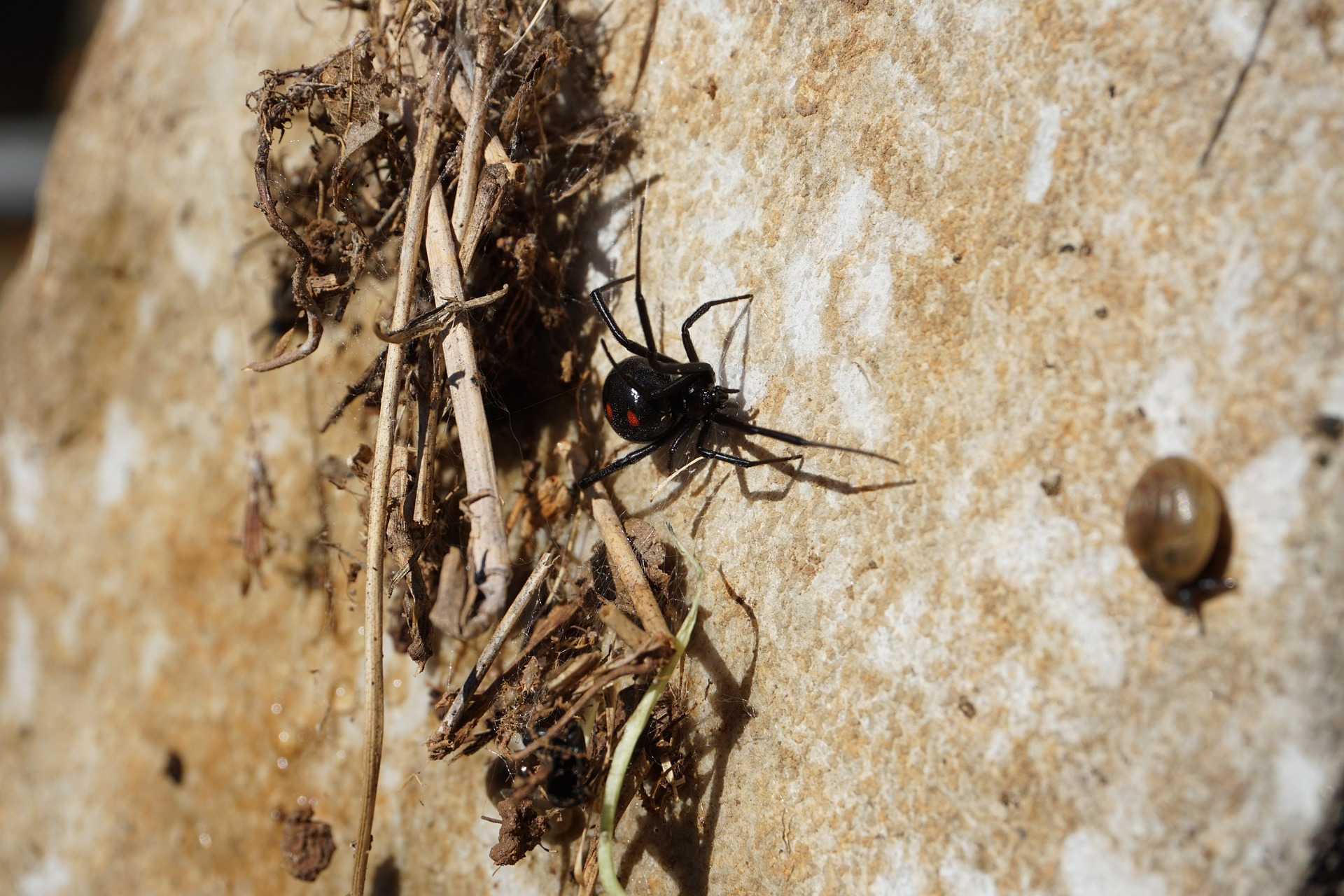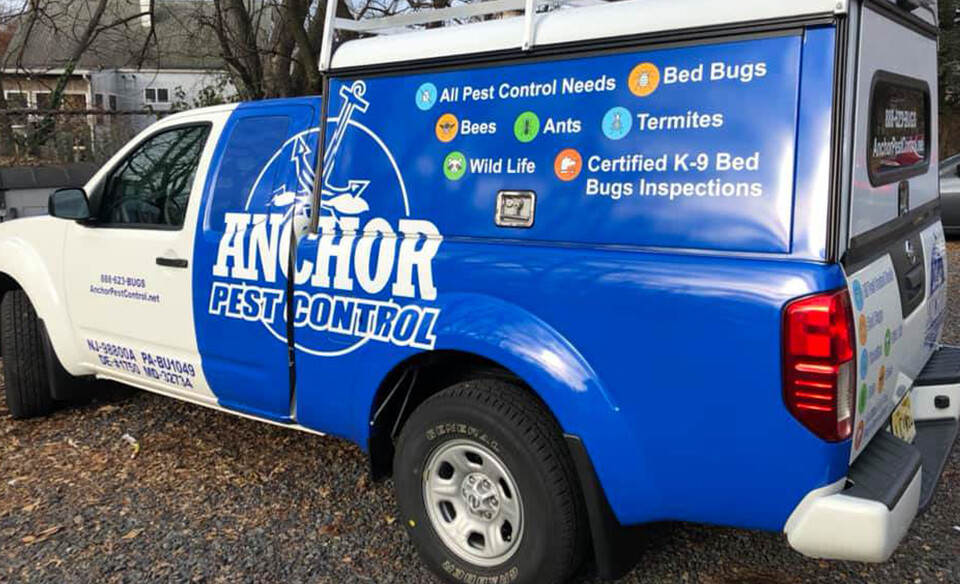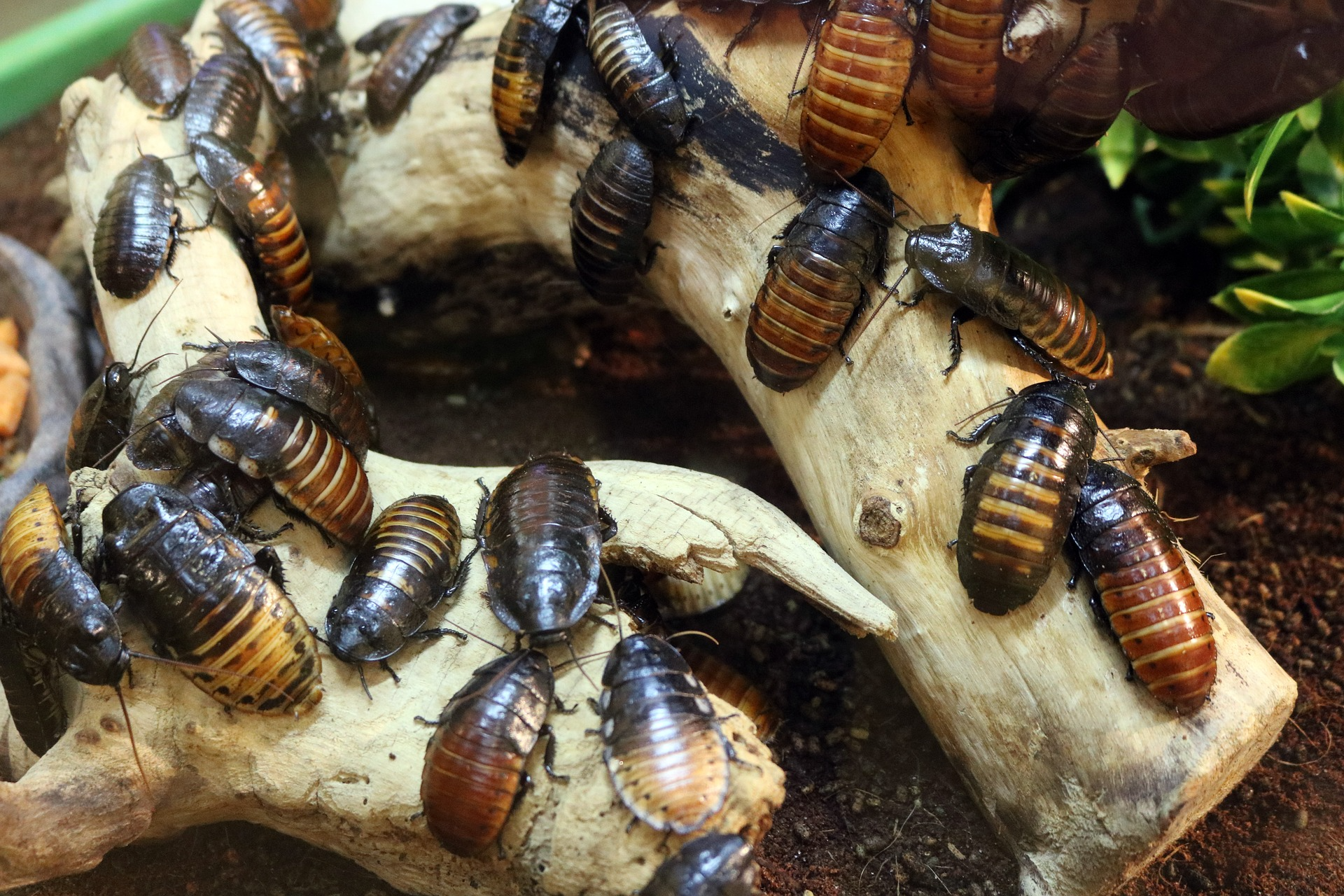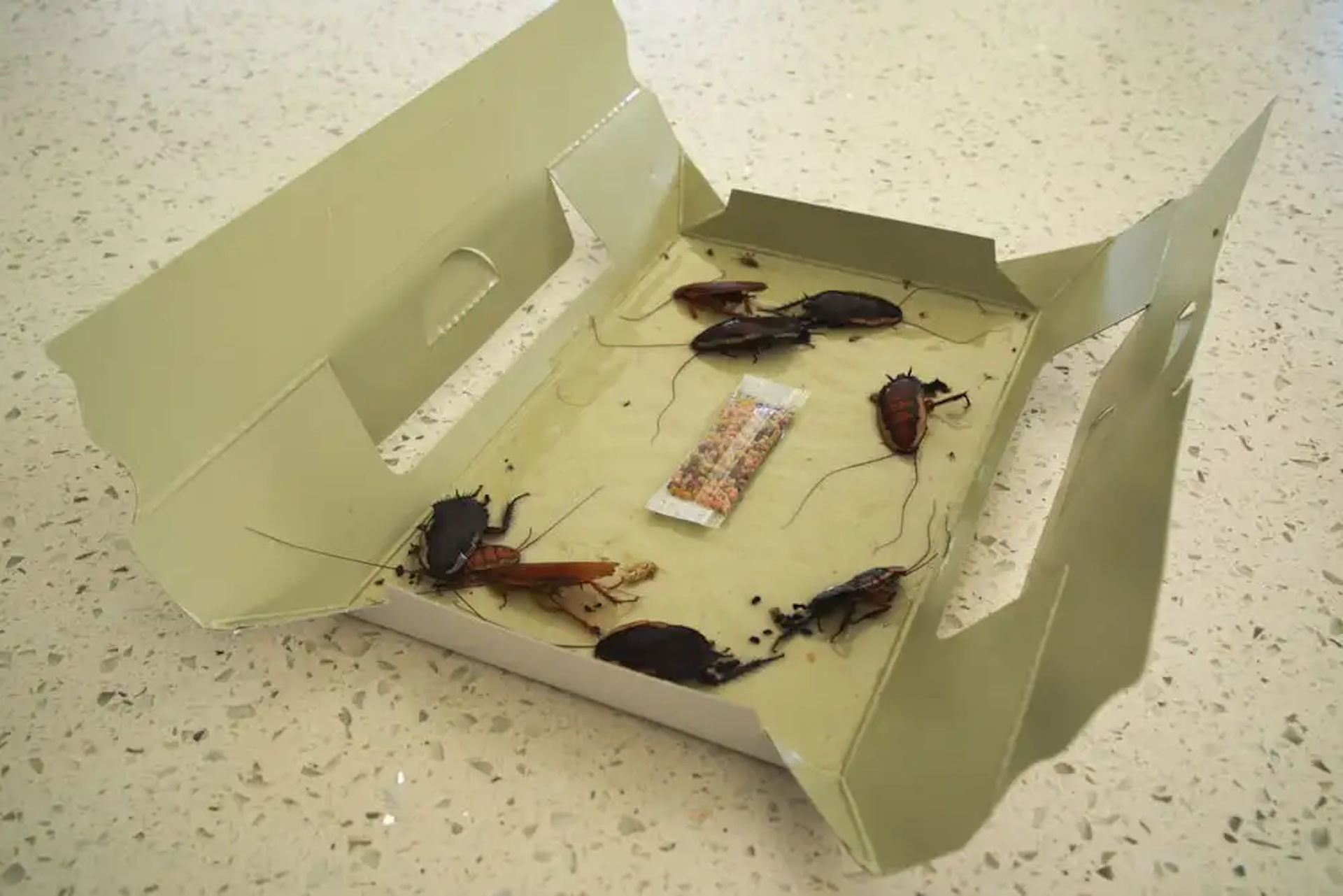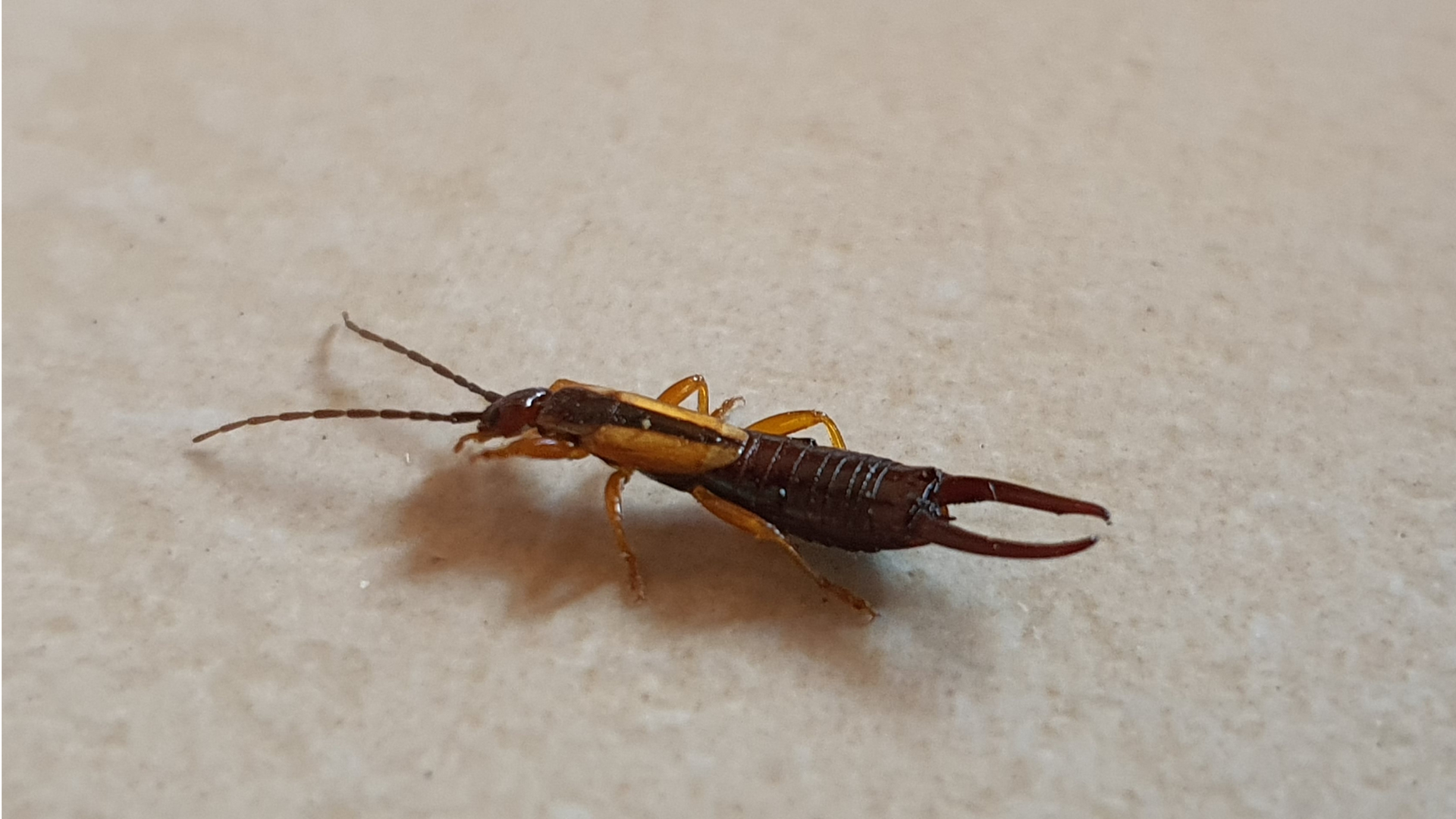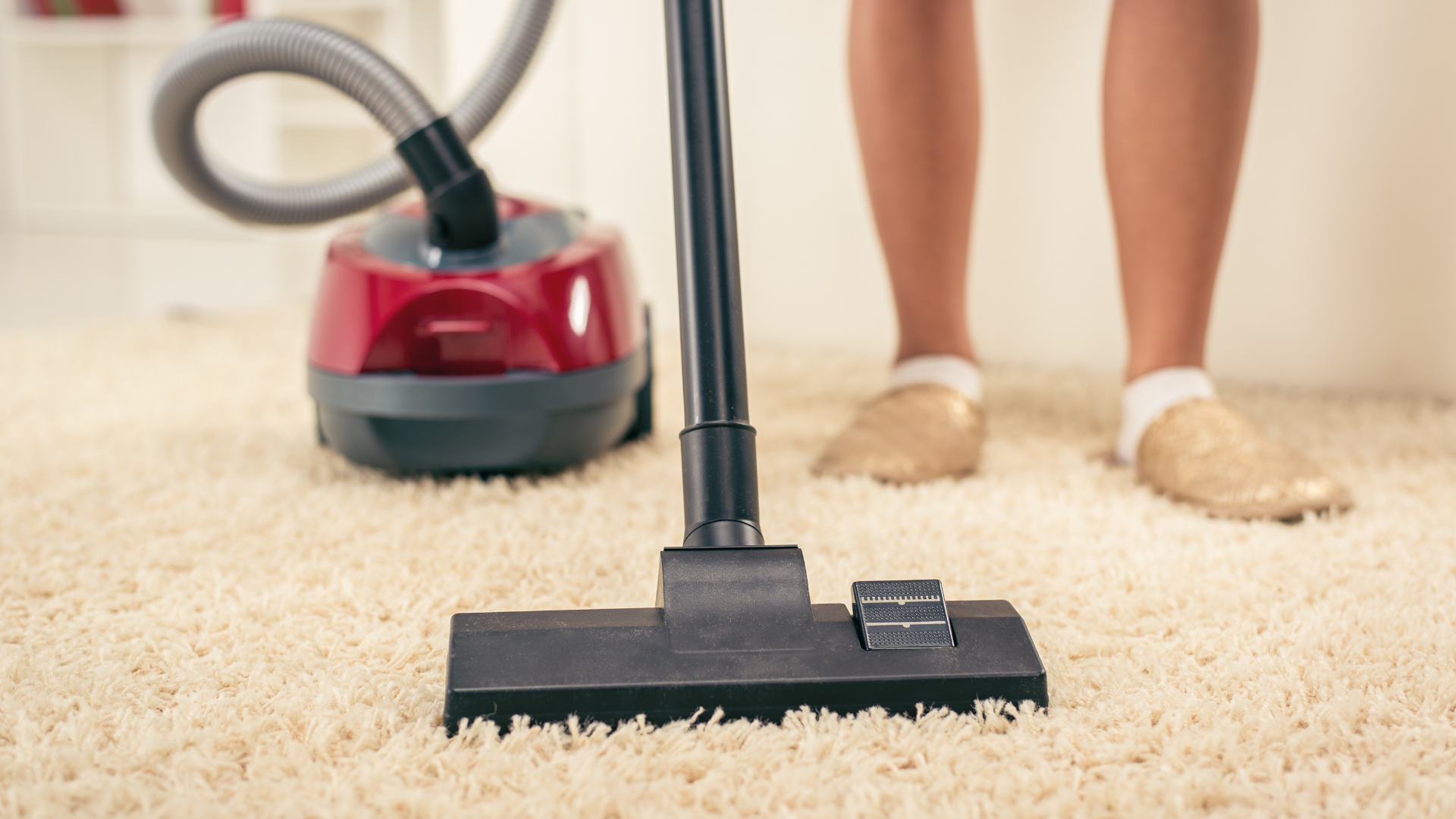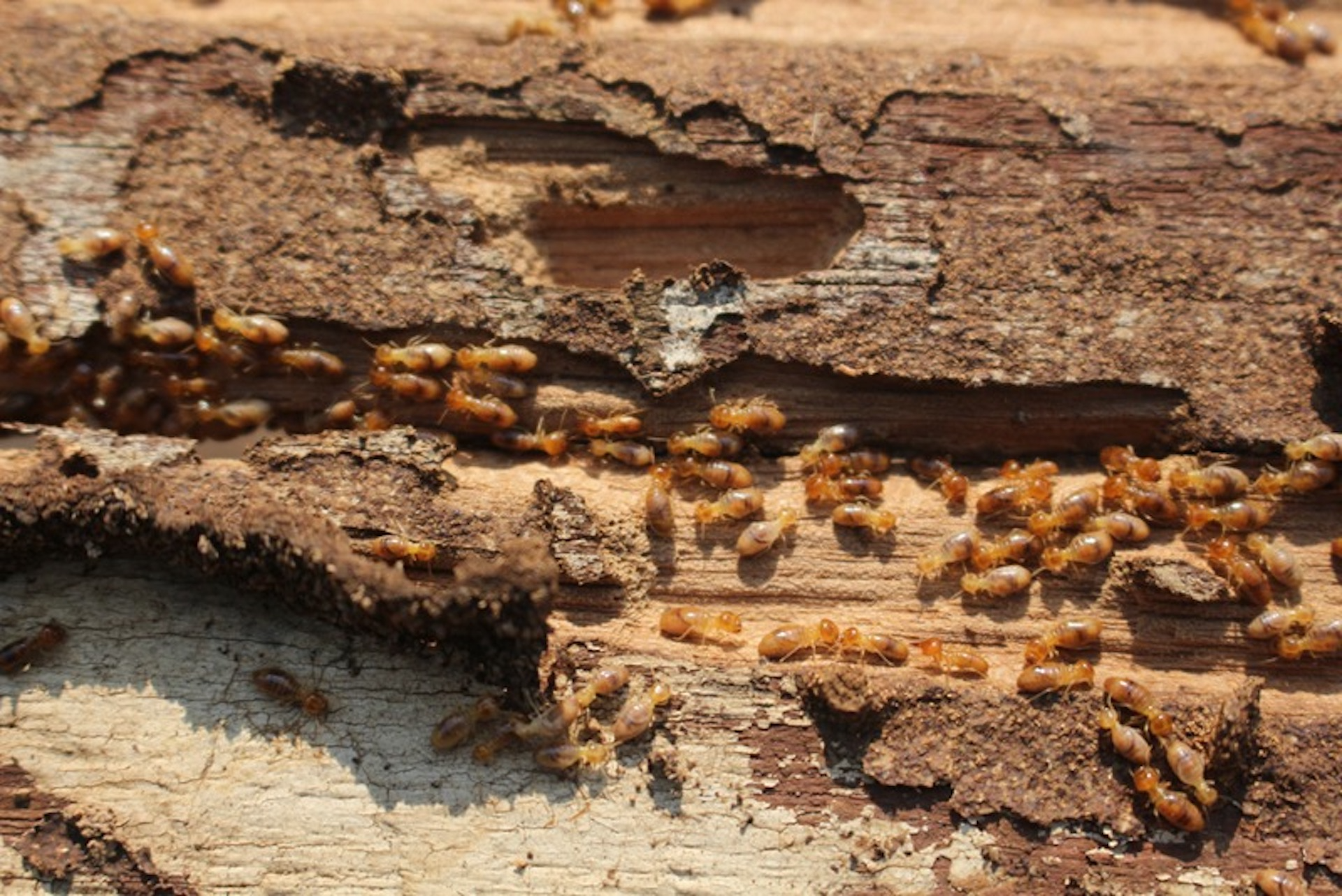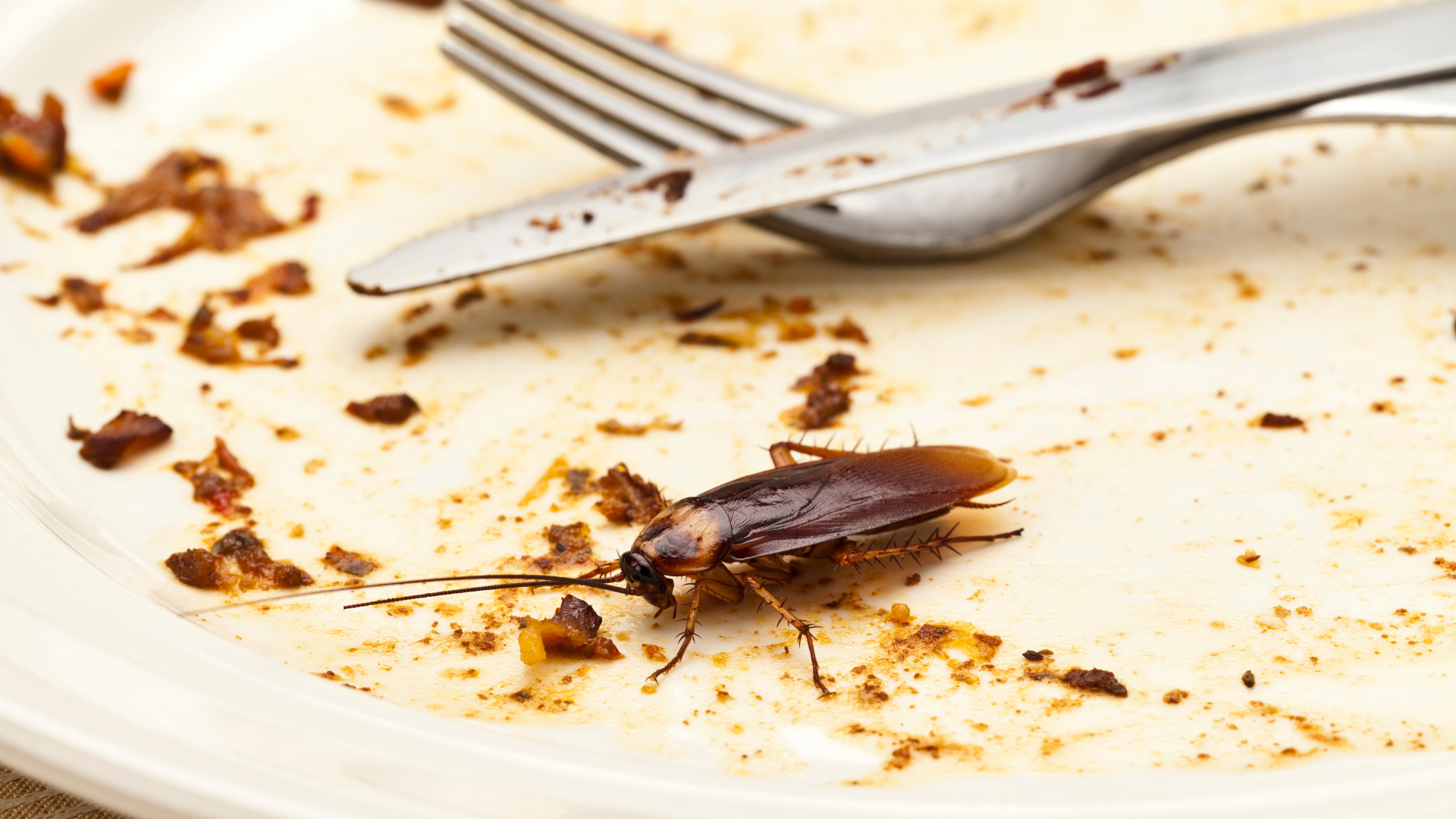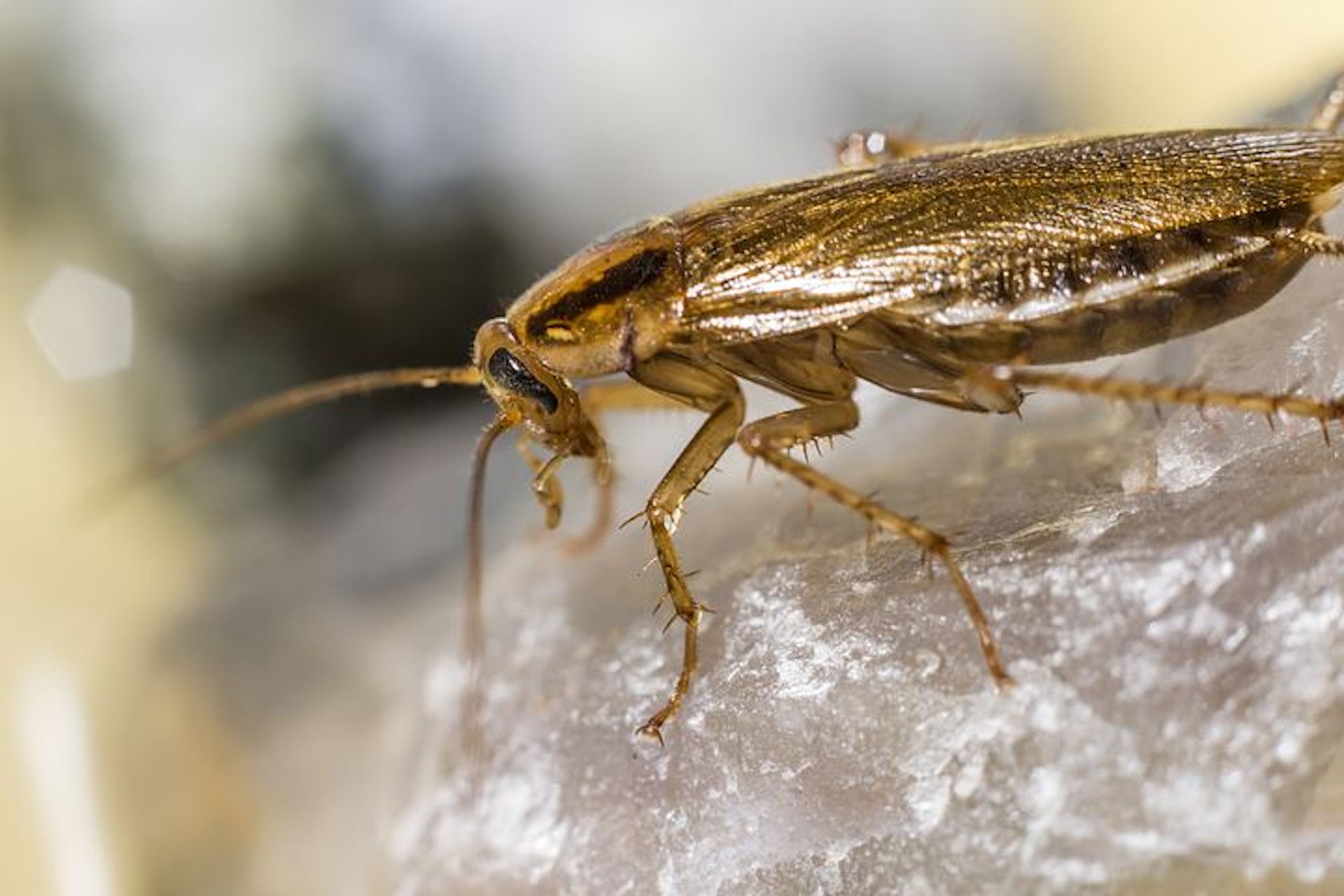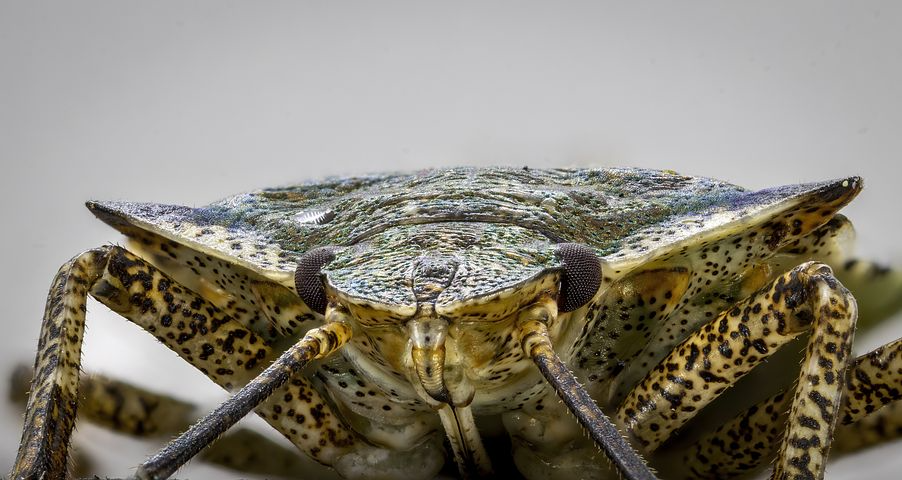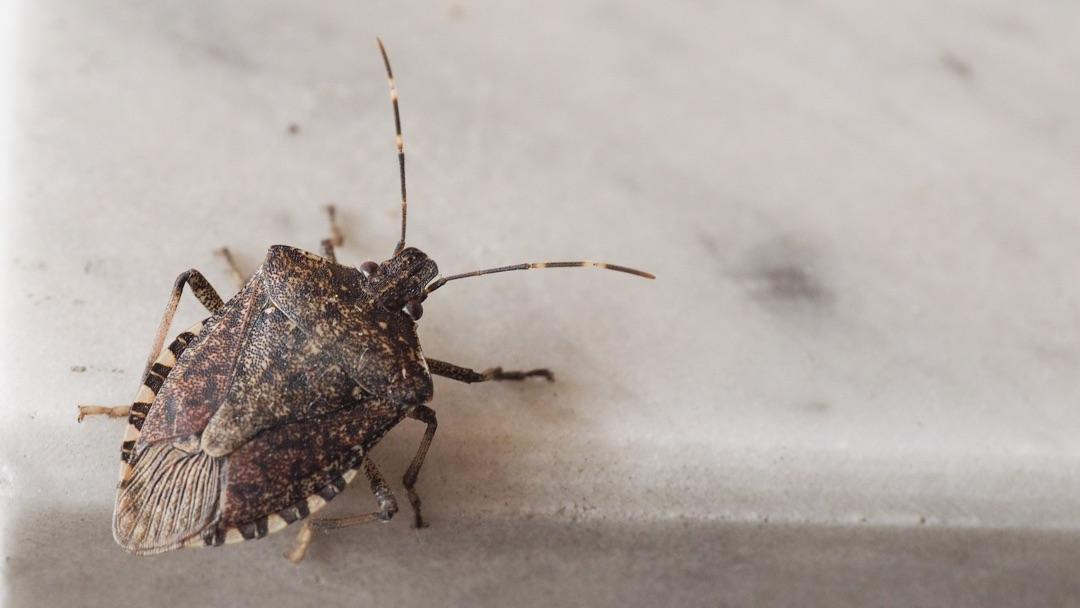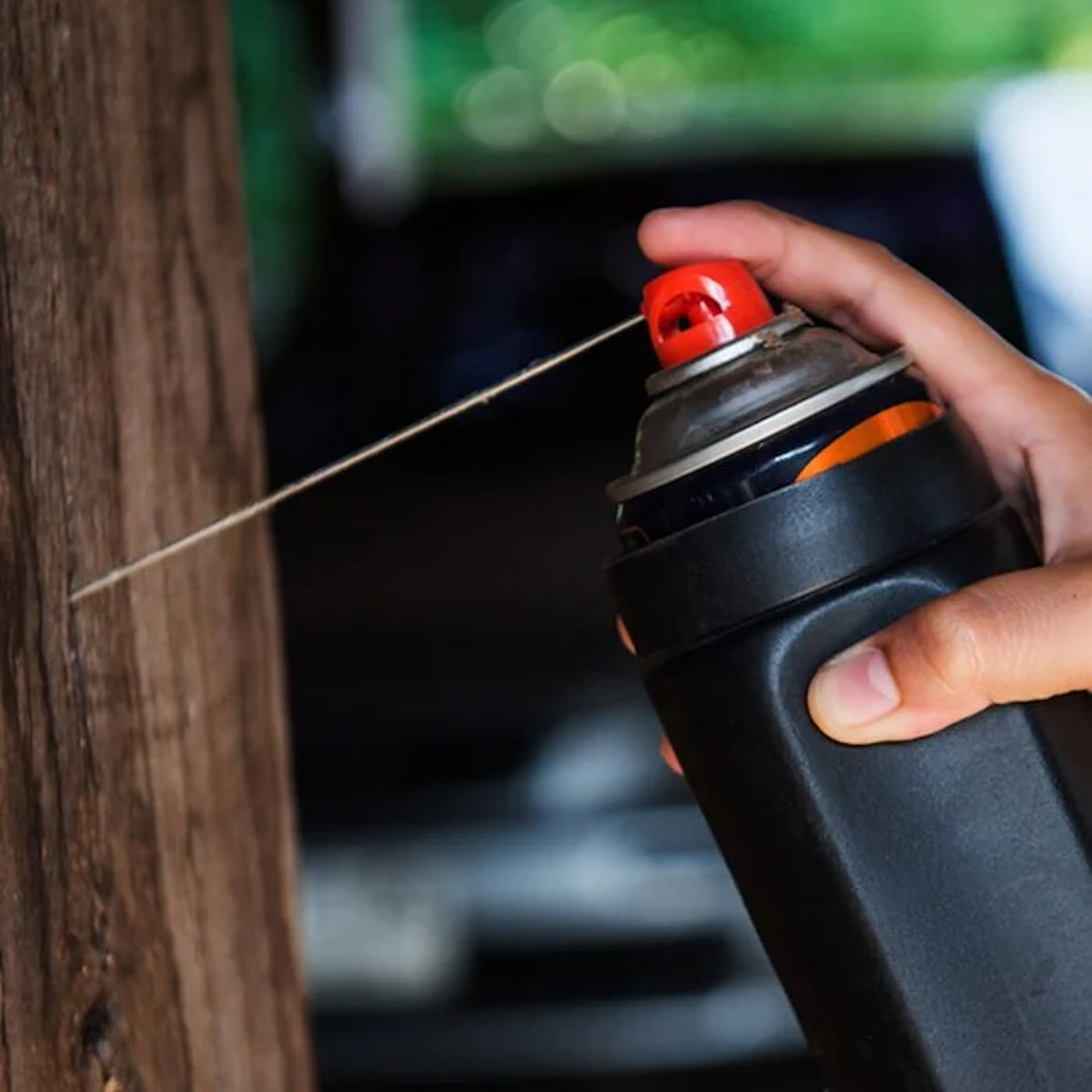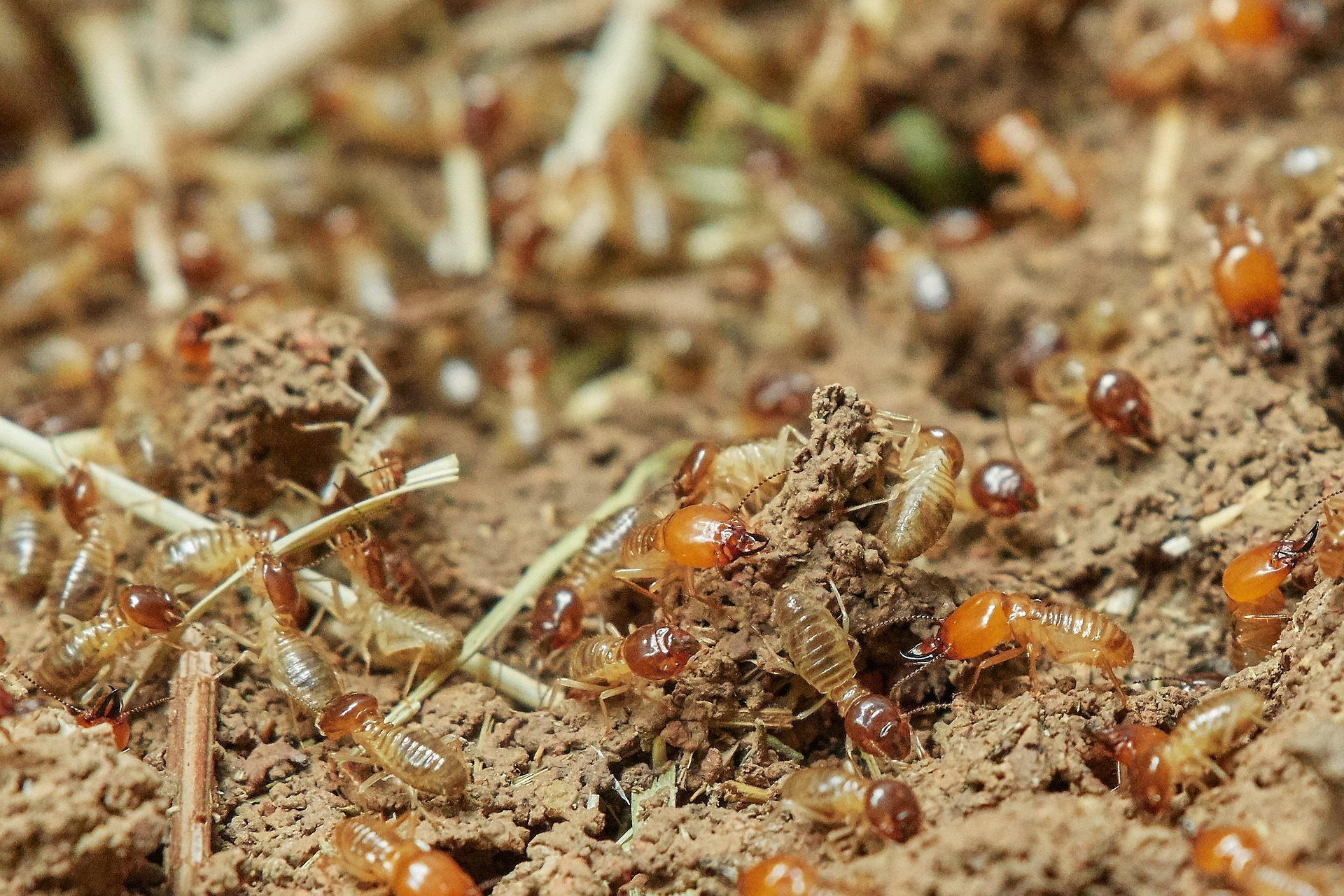Are Pesticides Harmful to Humans and Pets? Here’s What to Know
The popular flea collar Seresto made headlines last summer when lawmakers urged the company to recall its collars after linking it to thousands of pet fatalities.
This prompted a nationwide discussion over the efficacy of flea collars and the pesticides used to manufacture them. While effective at preventing fleas and ticks, the dangerous side effects left many pet owners angry and confused.
Certainly, pesticides can be dangerous in instances of direct exposure, but their efficacy in treating home infestations, like bed bugs and preserving crop yields can’t be overstated.
As a result, the best way to protect oneself is by learning more about pesticides.
As professional exterminators who handle pesticides for a living, we can say that we wouldn’t be able to do our job without pesticides.
However, it’s important to discuss the proper handling of pesticides and outline the risks associated with their use so everyday homeowners can balance the risks of pest infestations with their chemical treatments.
Are Exterminator Pesticides Safe for Humans?
Unfortunately, there is no simple answer to whether pesticides are safe. In many cases, professional handling of pesticides guarantees their safety and allows humans to resume dwelling in their homes after brief use.
On the other hand, direct exposure to these chemicals can lead to several harmful side effects, such as headaches, fatigue, nausea, and much worse.
Ultimately, pesticide safety comes down to how they are handled and our levels of exposure.
For these reasons, we’d like to list why pesticides are beneficial and safe for humans.
- The EPA regulates pesticides. Unlike chemicals like diazinon, which have been banned in the past, most modern pesticides are tested and certified for safe levels of human exposure in very small amounts.
- They’re effective at emergency treatment. Chemicals like Fipronil offer the quickest results regarding full-on termite infestations. And since exposure is minimal and professionals handle these chemicals, these chemicals may actually protect your health by getting rid of dangerous pests.
- Professionals handle them. Exterminators are trained in proper pesticide handling and will ensure that homes are safe after treatment before people can resume living inside them. This ensures minimal exposure and that all people, pets, and plants are protected from potential toxicities.
Ultimately, pesticide safety must be balanced against the health risks of pests themselves and tempered by whether or not pesticides are applied professionally or DIY. In the former case, we can ensure the safety of these chemicals and that the use of these products harms no one.
What Are Some Harmful Effects of Pesticides?
The harmfulness of pesticide exposure depends on their exposure rate and toxicity level. As we’ll illustrate later, some chemicals may be more toxic than others.
Ultimately, symptoms arise based on how exposure is made and for how long.
Topical Exposure
- Dermatitis
- Rashes
- Blisters
- Allergic reaction
Inhalation
- Coughing
- Wheezing
- Watery eyes
- Sneezing
- Respiratory issues resembling asthma
Other Symptoms
- Headache
- Nausea
- Vomiting
- Trouble breathing
- Digestion issues
- Changes in heart rate
- Coma
- Death
Cases of severe toxicity are extremely rare and almost always a result of DIY handling.
In many cases, exposure produces no symptoms. In fact, most studies show that people encounter or use at least one pesticide yearly without any effects.
How to Prevent Pesticide Toxicity
The danger of pesticides comes down to handling. Here are a few tips to help you prevent potential toxicity from mishandling products.
- Read labels carefully
- Only apply as much product as required.
- Keep areas well-ventilated if applying aerosol products
- Remove all clutter, including chew toys and kid’s toys, from exposure
- Keep pets and children out of the house while applying pesticides
- Keep pets off the lawn if applying lawn products for the manufacturer’s recommended amount of time
- Use non-toxic alternatives for DIY use
- Call a professional for larger infestations
- Store products out of the reach of pets or children
How to Prepare for Pest Treatment
With all of this information in mind, this leaves many people worrying about whether or not professional pest treatment or fumigation is safe. We can tell you it is, but if you’re still worried, there are several ways to prepare for treatment to limit potential exposure or risk.
- Place all food and perishables in cupboards
- Vacuum floors and wash countertops
- Move furniture away from walls
- Keep the home well-ventilated
- Stow away any clothes or belongings
- Take your kids and pets away from home during treatment
Common Pesticides Used By Exterminators and Their Risk
Again, the level of toxicity will be different for every chemical pesticide and how much is applied. For example, the most common pesticides exterminators use include:
- Fipronil: A mildly toxic pesticide used primarily for termites, cockroaches, and fleas. This pesticide comes in liquid or spray form and does require evacuation during treatments.
- Boric acid: Boric acid is one of the most widely used chemical pesticides and also one of the most dangerous. It’s typically applied as a spray but has a sweet aroma that may attract kids and pets, making it dangerous without proper precautions.
- Piperonyl butoxide: This is a carcinogenic pesticide used for severe pest infestations and alongside other chemicals. Proper fumigation and time to allow the chemical to dissipate are necessary for safe usage.
- Pyrethrins and pyrethroid: These are a class of effective insecticides which are generally safe for human exposure but can be deadly for aquamarine life. Proper handling and disposal are crucial.
- Indoxacarb: This is a relatively new chemical effective at combating cockroaches and preventing them from producing new generations of roaches. This chemical is relatively safe, though it does present some neurotoxic properties at high doses, meaning limited exposure is key.
- Hydramethylnon: This is a slow-acting compound that can cause lethargy and death in insects. Due to the time, it takes to work, homeowners often must evacuate the property for several days to allow the chemical to dissipate.
However, these pesticides should only be used by a professional.
For DIYers, the following are safer alternatives and ideas to rid your home of pests.
Safe Pesticide Alternatives for Pest Control
- Insecticidal Soaps
- Horticultural Oils
- Neem Oil
- Azadirachtin
- Horticultural Oils
- Bait Stations
You can find a wide list of all-natural products for any category of insecticide or pesticide treatment with a little research.
Often, the most effective and safest method of pest reduction comes from prevention.
Ways to Prevent Pests Naturally
- Door sweeps: Door sweeps seal off openings under doors to prevent mice and various insects from entering your home.
- Sealing cracks: Similarly, applying spray foam insulation or caulk to openings in your home may seal away any insects that try to take refuge in your home during the winter.
- Remove all garbage: Garbage is a magnet for cockroaches and insects. Keep your home clean, especially during the sweltering months of summer and extremely cold winter months.
- Washing dishes immediately: Remove all food from dishes and wash them as soon as possible to keep bugs away.
- Plant herbs: Certain plants and herbs like lemon balm, sage, thyme, and peppermint keep bugs away naturally from your garden and your home.
- Dichotomous earth: Applying diatomaceous earth around your home and garden can protect against beetles, spiders, fleas, worms, and so much more.
- Essential oils: Certain bugs, like cockroaches, can’t stand the smell of eucalyptus and tea tree oil.
- Pest control maintenance plans: Exterminators like my company, Anchor Pest Control, offer 365-year-round protection against pests using safe and effective prevention and control mechanisms.
What Is Integrated Pest Management?
A special program known as Integrated Pest Management (IPM) has been developed for people weary of the environmental impact of pesticides. While IPM is mostly reserved for farmers, the same principles of IPM can be applied to gardens and homes.
Some of the principles of IPM include:
- Identifying pests and determining if controls are required
- Using natural preventative measures (listed above) to prevent infestations
- Implementing control measures when prevention has failed
- Using natural alternatives to pesticides when allowed
- Choosing the least toxic form of pesticides when extensive treatment is required
We highly recommend anyone who is dealing with pests in their home or garden to adopt these principles for safe management. However, in cases where professional assistance is required, the sooner a professional can get involved, the safer.
Cases When You Should Call a Professional Exterminator
While DIY methods may save money, they are not as effective or safe. In many instances, calling a professional exterminator is the best option to control and eliminate potential infestations before they threaten your health.
We recommend contacting your local exterminator immediately if you spot the following bugs:
- Bed bugs
- Cockroaches
- Termites
- Large populations of ants
- Large populations of rodents
- Large populations of spiders
- Large populations of wasps
- Large populations of snakes
Often, pesticides are the only safe and effective option to prevent these insects from spreading or causing further damage to your home.
In many cases, even professionally, the use of pesticides is seen as a last resort option. In such cases, a full-on pest infestation’s health risks often outweigh the health risks of pesticide usage.
However, by seeking professional help for pest treatment or pesticide use, you can greatly limit your risk of exposure to toxic chemicals and rest assured that these chemicals will be handled safely.
While pesticides are undoubtedly harmful, seeking professional help will ensure that they are of no risk to you or your family.
Pesticide FAQS
1. What are the most harmful pesticides for humans?
While not widely used by many in the industry, organophosphates, including chlorpyrifos and diazinon, banned since 2001, are considered the most toxic because they attack the nervous system. Other chemicals like boric acid and fipronil are considered moderately toxic but safe under proper handling.
2. What happens if a pesticide touches your skin?
Wash the affected area with water and soap. Discard any contaminated clothing. Seek medical attention if you develop severe symptoms like a rash or contact dermatitis.
3. How long do pesticides stay in the body?
Most pesticides have a low half-life of around 16 days, while some may go as high as 60 days or older. For example, some pesticides, such as DDT, may last several years, though this is rare.
How to Get Rid of Ticks from Your Property and Pets
Whether climbing up your legs, latched onto your pets, or merely scurrying across the ground, ticks are one of the most feared and troublesome pests. These blood-sucking arachnids are known to harbor several diseases, making finding even one a call to action.
This article will delve into everything you should know about ticks, from etymology to how to get rid of them.
What Are Ticks?
You may be tempted to refer to ticks as insects, though that's a common misconception. Ticks are members of the arachnid class, along with several types of New Jersey spiders, including scorpions, mites, harvestmen, and sun spiders.
The primary difference between spiders and insects is their number of legs–arachnids have eight, while most insects have six.
Generally, there are three major tick species prevalent in New Jersey: the deer tick, the lone star tick, and the American dog tick. Unfortunately, all three species are known to transmit disease, making tick infestations far more dangerous than any regular nuisance pest.
For example, ticks are known to transmit various diseases, including:
- Lyme disease
- Rocky Mountain Spotted Fever
- Anaplasmosis
- Babesiosis
- Ehrlichiosis
Each disease presents uncomfortable side effects, with some even lingering for life.
Why Are Ticks in My Yard?
Ticks aren't likely to travel long distances independently; they can't fly, move slowly, and are extremely small when not engorged with a host's blood. So how did they get into your yard?
Most likely, ticks migrated into your yard with the help of an infested wild animal like a deer, possum, squirrel, raccoon, bird, or even a lizard! They may also gain access to your home or yard through a family pet or hitch a ride on your clothes or body after a run or hike through a wooded area.
What Seasons Do Ticks Come Around?
While ticks can be active anytime the weather is above freezing temperatures, adults are typically most active between March and mid-May and mid-August to November. Nymphs, or juvenile ticks, generally are most active from mid-May to mid-August. Both nymphs and adults are capable of spreading disease.
Tips for Avoiding Ticks
With ticks posing such a threat to the health of you, your family, and your pets, doing your part to avoid them whenever possible is essential. Here are some tips to prevent tick encounters and bites.
Stay on the Trail
Ticks typically hide in dense, bushy, wooded, or grassy areas, hoping to reach an unsuspecting host to which they can attach themselves. For this reason, it's always best to stay on clear paths when hiking, camping, or running.
The same rule applies to pets as well. Keeping your pet on a leash during walks, hikes, or runs in wooded areas is the best way to prevent a tick infestation.
Treat Outdoor Clothing
If you have a set of clothing or shoes that you usually wear to hike or exercise outdoors, try spraying them with a permethrin-based repellent. These chemicals can help repel any ticks you encounter, preventing them from latching to your clothes or skin.
Wear Long Clothing
While no one enjoys long clothing on a hot day, it may be the difference between receiving a tick bite or not. Long clothing forms a barrier between ticks and your skin, creating one more obstacle for ticks to get through.
Inspect Yourself and Your Pets Immediately After an Outdoor Activity
After partaking in an activity outdoors, immediately inspect yourself and your pets for ticks. Some ticks may not bite immediately, and several tick-borne illnesses require the tick to be attached to a host for 36-48 hours to pass the infection.
Due to the tick's small size, it's essential to inspect yourself and your loved ones thoroughly. Check under the arms, in and around the ears, inside the belly button, in hair, around the waist, near the ankles, and between the legs.
Shower Immediately
This step is often done in conjunction with inspecting yourself. Showering as soon as possible can rinse loose ticks off your body and out of your hair before they can latch on.
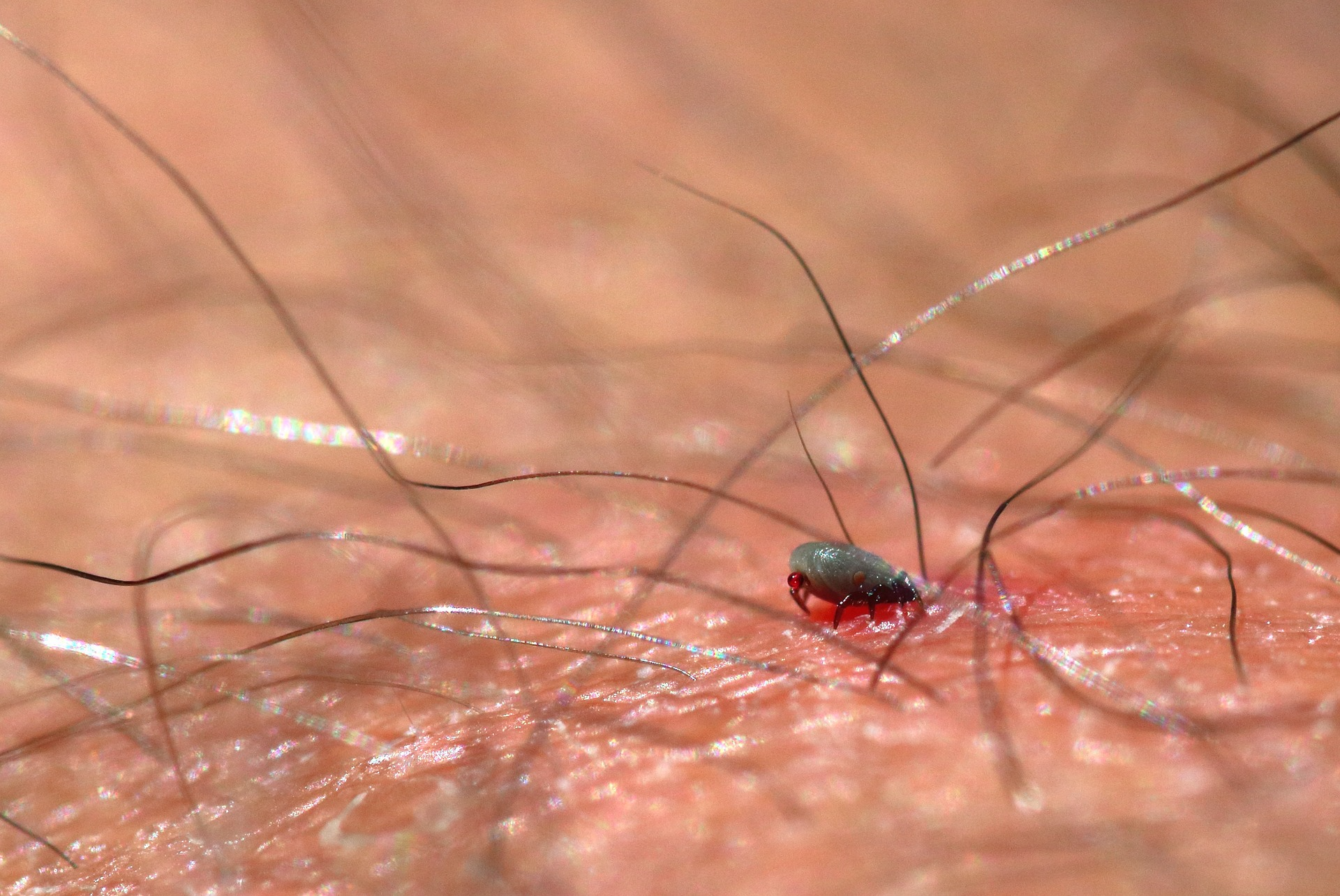 Symptoms of an Untreated Tick Bite
Symptoms of an Untreated Tick Bite
If you miss a tick bite for an extended period, there are some side effects to keep an eye out for that may allude to a Lyme Disease infection. These include:
- Fever
- Headache
- Fatigue
- Chills
- Muscle and joint aches
- Flu-like symptoms
- Erythema migrans rash
If a tick has bitten you in the past 30 days and you are displaying any of these symptoms, you should bring it to the attention of a medical professional immediately.
How to Treat a Tick Bite
If a tick bites you, remove the pest immediately.
Unfortunately, thanks to their strong jaws, it's nearly impossible to safely grab and remove the arachnid with a simple tug.
To effectively remove a tick, follow these steps.
- Locate the Necessary Tools. To remove a tick, you'll need a pair of sharp tweezers and rubbing alcohol. Cleaning the area of the bite is critical to preventing infection, and the small-tipped tweezers are far more accurate than fingers or square-tipped versions.
- Clean the Affected Area. Before attempting to remove the pest, clean the immediate area to prevent infection.
- Remove the Tick. At this time, you can attempt removal. Grab the tick as close as possible to the skin, preventing ripping or squishing the pest. Pull upwards with steady yet gentle pressure. It may take some effort, but the tick will likely release its grip. Do NOT twist or wiggle, as this may leave portions of the tick's mouthparts embedded in your skin, leading to infection.
- Clean the Affected Area Again. After successful removal, clean the area once more with rubbing alcohol to prevent infection.
After removal, you have two options–dispose of the tick or have it tested. To dispose of the tick, either:
- Drop it into a container of rubbing alcohol
- Flush it down the toilet
- Tightly wrap it in tape
Contact your local lab or government if you wish to have the tick tested.
Ways to Get Rid of Ticks in Your Yard
While preventing bites and other symptoms is valid, tackling an infestation at the source is always best. Here are some methods to treat ticks in your yard.
- Use a Tick Spray. While treating your yard with insecticides may not be your first choice, it's an effective means of killing juvenile and adult ticks. Tick sprays are relatively affordable and can be safely applied around your property to prevent their entry.
- Apply Diatomaceous Earth. Diatomaceous earth is an excellent natural insecticide. You can sprinkle this powder throughout yards and near entry points of homes. When ticks pass through the powder, it scours their hide and causes dehydration, eventually leading to death. The product typically kills 12 hours after contact.
- Keep Your Yard Tidy. Ticks hide in leaf litter, overgrown grass, and unkempt bushes. As a result, one of the best treatments is to keep a clean and tidy yard. Doing so reduces hiding places and minimizes your and your pet's chances of picking up the pests outdoors.
- Utilize Tick Tubes. Another solution is tick tubes; these outdoor treatments are packed with insecticide-treated cotton, which tick-infested rats and mice collect. The insecticide eventually leaches into the tick, causing death.
- Natural Sprays. Neem oil and Cedar oil are effective natural insecticides that are safe for pets and humans. Cedar oil is an excellent repellent–spraying it on affected areas will help to drive ticks from your yard. Neem oil is a natural contact killer–spray the substance anywhere you've noticed tick activity to eliminate the pests.
- Contact an Exterminator. If the above methods are less-than-effective, consider contacting a professional. Anchor Pest Control offers tick control for all species of ticks, including American dog tick control.
Ticks are a species of pest that no one wants in their home or yard. These blood-sucking arachnids are known to transmit several potentially dangerous diseases, making the sight of even one tick a call to action.
If you've noted an increase in ticks in your yard or on your pets, try the above methods to eradicate them. Otherwise, contact your trusted local pest experts at Anchor Pest Control if all else fails. Our experts can set you up with an effective treatment against ticks or any other common New Jersey pests.
We also offer flea and tick control as part of our Pest-Protect 365 plan for ongoing service, protecting against over 40 different species of pests.
How to Get Rid of Ticks FAQ
Are ticks dangerous?
Ticks are known vectors for several harmful diseases, including Lyme disease. As a result, treating a tick bite immediately and contacting your doctor may be necessary to stem any associated infection.
Where do ticks hide in my yard?
If you or your pet find ticks on themselves, it’s most likely because one of you passed through a thick brush. For the most part, ticks hide in leaf or grass piles, bushes, and tall grass.
What are the best ways to avoid ticks?
Avoiding ticks is relatively easy as long as you know their preferred hiding places and behaviors. Tips to prevent contact with these pests include:
- Staying on hiking paths and trails.
- Wearing long, protective clothing outdoors
- Treating clothing with a permethrin-based repellent.
- Showering immediately after returning home from an outdoor activity.
- Thoroughly inspect your body for ticks, including under the arms, between the legs, in and around the ears and hair, around the waist, and in the belly button.
The 7 Most Dangerous Bugs in New Jersey
Aside from the psychological trauma of seeing a pest in your home, many pests can carry diseases and harm your health.
While not all pests are dangerous, several species in New Jersey can be toxic or deadly.
To help you avoid these pests, we’ve listed the seven most dangerous bugs in New Jersey.
1. Black Widow Spiders
The black widow spider is one of several types of spiders in New Jersey, but it comes with the deadliest bite.
While not as common as the New Jersey brown recluse, Black widows have been observed across the state. Specifically, the Northern black widow, or Latrodectus variolus, can be spotted periodically throughout random parts of New Jersey.
Female Northern black widow spiders are easily identifiable by their glossy black bodies with white striations and red spots atop their abdomens and characteristic red hourglass on the underside. Male Northern black widows are smaller than females and feature similar markings without a distinctive, bulbous abdomen.
Female black widows possess a powerful bite loaded with neurotoxic venom that can cause severe illness in specific individuals. While black widow bites often cause no long-term effects, severe reactions may occur. For example, black widow bites may cause nausea, vomiting, painful abdominal cramps, light-headedness, shortness of breath, muscle pain, and localized swelling and irritation.
2. Kissing Bugs
Triatominae–also known as “kissing bugs” or “conenose bugs”–are a subfamily of insects in the United States, Central America, and South America. These insects feed on the blood of invertebrates that they nest alongside, including humans.
Kissing bugs are known to bite people on or near the lips and mouth, hence their nickname. While less common in the Northern U.S., kissing bugs are known vectors of Trypanosoma Cruzi–the parasite responsible for Chagas disease in humans.
When infected with Chagas, humans may experience a slow development of health issues, including severe heart conditions and digestion issues.
As a result, it’s best to avoid these dangerous bugs whenever possible. Fortunately, you can spot these insects by their ovular brown bodies, cone-shaped heads, thin antennae, and legs.
3. Spotted Lanternflies
While not directly harmful to humans or pets, the spotted lanternfly is an invasive bug in New Jersey with devastating effects on several important crops, including walnuts, grapes, hops, apples, and stone fruits.
This invasive planthopper is native to Asia but was first introduced to the U.S. in 2014 by vessels transporting cargo to Pennsylvania. Since then, the SLF population has significantly enlarged, wreaking havoc on the Northeast’s cash crops.
This insect is identifiable by its inch-long body, black head, yellow-striated abdomen, gray spotted forewings, and red hindwings. If you spot the insect, or its grayish, plaster-like egg sacks, it’s recommended to destroy them to prevent further spread and economic damage.
4. Asian Longhorned Tick
The Asian long-horned tick is an invasive species from Asia, initially found in New Jersey in 2017. Since then, the Asian longhorned tick has been found across six New Jersey counties, including Hunterdon, Union, Middlesex, Mercer, Bergen, Somerset, Passaic, Camden, and Monmouth.
Like most ticks, this particular variety is a vector for disease. It may also cause harm to animals due to blood loss in the event of a severe infestation.
Asian long-horned ticks are identifiable by their reddish-brown bodies and poppyseed size when unfed and pea-sized, gray appearance when filled with blood. These ticks are ovular in shape and lack antennae.
If you locate what you believe to be an Asian long-horned tick, it’s best to isolate the arachnid and place it in a sealed bag.
5. Wasps
New Jersey is home to various wasp species, including yellowjackets, paper wasps, and baldfaced hornets.
Wasps are social creatures and highly aggressive pests that will sting if threatened. Unlike honey bees, wasp stingers are not barbed, allowing them to sting multiple individuals multiple times throughout their lifetimes.
While most wasp stings cause localized pain, swelling, and redness, those with severe allergies to wasp venom can get anaphylaxis. If left untreated, anaphylactic shock can lead to death in adults and children, thus earning wasps a spot on this list.
If you spot a wasp’s nest on your property, it’s best to leave the insects alone if possible. However, contact a pest professional wasp control company to avoid injury if the nest is close to buildings or inhabited dwellings.
6. Mosquitos
Not only are mosquitos irritating, but they’re also potentially dangerous due to their propensity to spread disease. While uncommon, mosquitos carrying West Nile Virus, Zika Virus, Eastern Equine Encephalitis, and several other diseases have been found in the continental United States.
As the number one vector for Dog Heartworm, mosquitos also pose a severe threat to your pets. This parasitic roundworm is passed through the bite of an infected mosquito, where it quickly wreaks havoc on your pet’s internal organs, leading to lung damage and heart failure.
While mosquitos are relentless pests, taking the necessary steps to keep the insects away from your family and pets is essential.
7. Deer Ticks
Last on the list are deer ticks, another species known to be a vector for disease in humans. These arachnids can harbor such diseases as:
- Lyme Disease
- Anaplasmosis
- Ehrlichiosis
- Powassan Virus Disease
- Borrelia Disease
- Rocky Mountain Spotted Fever (RMSF)
Female deer ticks are identifiable by their reddish-brown color, black shield-shaped markings on the top of their abdomens, and black legs. Males are similar in appearance, though they feature primarily black bodies and are generally smaller than females.
If a deer tick bites you, it’s best to immediately remove it and contact your health professional, especially if you develop flu-like symptoms.
If you’re dealing with an infestation of any of the dangerous bugs listed above, contact your qualified local pest professionals at Anchor Pest Control. Our team of experts has provided New Jersey residents with thorough and cost-effective exterminator services for over 25 years and can clear your property of unwanted pests in no time.
Dangerous Bugs in New Jersey: FAQ
Which species of widow spider is commonly found in the Northeastern United States?
The Northeastern United States, including New Jersey, is home to the Northern black widow spider. This arachnid features a glossy black body, a large abdomen, and iconic black and white markings across its body, making it difficult to miss. Female black widows pack a dangerous bite, full of neurotoxic venom that may lead to serious health issues.
Where do Kissing Bugs get their name?
“Kissing Bug” is a nickname given to members of the Triatominae family due to their preferred preference of where to bite humans. These insects traditionally bite humans around their lips and mouth, thus the title!
Why are spotted lanternflies on the list?
While these dangerous bugs don’t cause direct harm to individuals, their voracious appetites for New Jersey’s cash crops can have a devastating effect on food availability and the state’s economy. As a result, any sighting of these insects should be reported, and any living adults or unhatched egg sacks should be destroyed.
7 Benefits of a Pest Control Maintenance Plan for Homeowners
Most of us take having a pest-free home for granted until we actually have to deal with an infestation.
The emotional toll of having a private and safe place infested by cockroaches and rats is impossible to quantify. For many, it’s enough to force them to sell their homes.
While preventative pest control may be the last thing on your mind in an inflationary economy, you could save significantly in the long run.
According to Architectural Digest, general preventative pest control could cost homeowners between $400 to $950 annually. However, Home Advisor estimates that the average cost of one-time bed bug treatment could be $5,000 for bed bugs and $8,000 for termites.
Additionally, emergency treatments don’t factor in the cost of home repairs associated with termite damage, which totals over $5 billion annually.
Like health insurance, no one plans for an accident or an illness, but you’re thankful to have insurance to help you manage the costs. As you’ll see, a preventative pest control maintenance plan can give you a lot of the same security you get from an insurance plan.
What Is a Pest Control Maintenance Plan?
A pest control maintenance plan is a generalized and comprehensive pest management program designed to prevent infestations and keep your home pest free.
At Anchor Pest Control, we offer Pest Protect 365, an annual pest management program designed to ward off over 40 pests from your home.
Between preventative measures, such as quarterly chemical and non-chemical treatments, and generalized directions to help keep your home pest free, our pest control maintenance plan is designed to thwart infestations before they occur.
Additionally, our plan offers routine on-site inspections to identify areas where your home is vulnerable to pests.
Most pest control maintenance plans offer monthly, quarterly, or annual inspections and reports to ensure your home is pest free.
At the very least, I recommend having an annual check to ensure no pests are lurking in your home where you can’t see them.
What’s Included in a Pest Control Plan?
A pest control maintenance plan will differ by exterminator, but most residential pest control programs, include:
- Regular inspections and pest treatment (chemical or non-chemical)
- Comprehensive reports with guidance to prevent future pests
- On-demand onsite treatment of any growing infestation
- Special discounts for emergency treatment
- Specific treatments for individual pests, including fleas, bed bugs, termites, cockroaches, and more
- 24/7 termite monitoring programs (exclusive to Pest Protect 365)
Plans may also be customized around specific pests native to your area or landscape.
Now that we understand what’s included in a pest control maintenance plan, the question becomes whether one is right for you.
7 Benefits of a Pest Control Maintenance Plan
1. Ensures a Pest Free Home
If peace of mind is important to you or if you’ve previously dealt with a pest infestation, you probably value the comfort of having a pest-free home.
With a routine pest control plan for your home, you can rest easy knowing that your home will be free of any pest presence inside or outside and that your plants and home’s framing will be safe from pest damage.
Not only is this peace of mind something that is priceless, but it’s actually very cost-effective in the long run.
2. Lower Cost than Emergency Service
While high-end treatments for bed bugs and termites may cost you thousands of dollars, this doesn’t factor in finding a place to live for a few days while treatments are conducted. Additionally, this number doesn’t include the cost of home repair and the damage to foliage that an infestation may cause.
Even more affordable treatments for ants, ticks, or mosquitos could cost you $500 per treatment for one-time treatments and still leave you vulnerable to reinfestation.
Overall, an annual pest control maintenance plan will cost you significantly less than more expensive treatments for termites and bed bugs and around the same for a one-time treatment for any generalized pest–after the infestation has spread.
3. Prevents Infestations Caused by Neighbors
If you’ve ever lived in a major city, you’re probably used to dealing with rats and cockroaches in apartment buildings or areas where many live.
Unfortunately, having a clean home won’t prevent an infestation caused by a dirty neighbor. So while you may think you’re safe from roaches and rats, when one neighbor deals with an infestation, it may leave your home vulnerable.
For example, cockroaches can travel under doors, through sewer pipes, and even outside from home to home and spread across entire communities in weeks.
Prevention of cockroaches from a neighbor is almost impossible without proper chemical treatment to prevent them from penetrating any barrier of your home.
4. Protects the Health of Your Family and Pets
Indeed, the emotional toll of a cockroach or rat could be enough to warrant preventative service, but lots of pests can also pose a significant health threat to you and your pets, including:
Many of these pests can be vectors for diseases impacting plants, animals, and human health and should be treated immediately to prevent disease.
5. All-Season Prevention
While some people consider spring and summer the most popular seasons for pest infestation, many pests retreat to warm basements and attics for refuge during the colder months. In general, I recommend inspecting your home for the following pests during the winter:
- Rodents
- Box elder bugs
- Cockroaches
- Stink bugs
- Spiders
- Beetles
- Silverfish
Routine preventative pest control will ensure your home is pest-free during all seasons, not just in the warm summer months.
6. Ensures Responsible Use of Pesticides
Many forgo preventative pest control in favor of DIY chemical treatments, such as pesticides. Unfortunately, many pesticides can harm your home, health, plants, and pets.
Hiring a qualified exterminator ensures the responsible use of pesticides and the right choices for each treatment. The pest control experts at Anchor Pest Control only use safe pesticides and treatments for you, your pets, and your home and will never cause illness or harm.
7. Protection Against Invasive Species like the Spotted Lanternfly
Finally, preventative pest control is a great strategy to prevent invasive species like the spotted lanternfly or emerald ash borer from infesting your property. Unfortunately, these species are challenging to spot because they are foreign bugs and require active maintenance to prevent their spread further north and throughout New Jersey.
A qualified pest control expert will identify any potential invasive pests lying around your property, even if they’re dormant during the winter, to prevent a full-blown infestation come spring or summer.
In many instances, pest prevention starts with identifying and treating pests before they can spread and multiply. The problem with emergency pest control programs is that they treat the spread after it’s too late and significant damage has been done to your home or health.
While the financial incentives are there to invest in a routine pest maintenance program, the peace of mind our customers have is so much more worth it.
Additionally, our programs help our customers retain their home’s integrity and value, so they don’t have to spend extra money to deal with the damage from a pest infestation.
FAQS
1. How much does a pest control plan cost?
Most pest control programs cost between $400-$950 annually, although our program is customized based on a customer’s property size and treatment needs.
2. What are examples of different types of pest control?
There are several types of pest control used to treat residential properties, including:
- Chemical: Commonly used for emergency and routine treatment. Chemical treatments attack the nervous system of pests to exterminate them and prevent breeding.
- Biological: Pathogens or predators may be used to reduce the population of a specific pest.
- Physical: Barriers are erected, and pathways are sealed to prevent pests from entering a home or property.
- Electronic and ultrasonic: Electronic gadgets are used to push away pests from a property.
3. How do you prepare for routine pest control?
If you’re preparing for routine pest treatment or emergency service, we always recommend our customers do a few things in advance:
- First, clean your kitchen and eliminate any pest food sources.
- Second, move furniture from walls so experts can investigate and treat barriers in your home.
- Third, allow adequate access to experts to explore parts of your home where pests commonly lie.
- Finally, restrain pets from giving experts proper time and room to operate.
How to Get Rid of Cockroaches | 11 Cockroach Removal Options
The common Cockroach in New Jersey is an insect that strikes fear into home and business owners alike.
Unfortunately, the Tri-state area is home to several varieties of cockroaches, most commonly the American Cockroach, the German Cockroach, and the Brown-Banded Cockroach.
These everyday household pests are renowned for their vigor, persistence, and stealthy ability to hide large-scale infestations.
Thankfully, there are several tips and tricks to resolve an infestation, including DIY methods and professional treatments, as well as ways to prevent these pests from coming back.
Why Are There Cockroaches in My Home?
It’s essential to understand where cockroaches come from to stop them.
Cockroaches are creatures of necessity, settling anywhere that their primary three needs can be met:
- Food
- Water
- Shelter
Since your home likely has a fair share of each, it's reasonable that cockroaches may opt to take up residence there.
In many cases, cockroaches may infest a relatively clean home, as long as it has access to any of these needs in a warm basement or attic.
The key to stopping an infestation is first to identify one. Unfortunately, when it comes to cockroaches, it often only takes one to tell you that more are lurking around.
Do I Have A Cockroach Infestation?
Cockroaches are nocturnal pests. For this reason, it isn't abnormal for an infestation to go unnoticed for weeks or even months.
If you suspect an infestation but can't locate any physical insects, look out for these tell-tale signs:
- Droppings: Think black pepper. These tiny droppings will often be found scattered near their feeding sites and dwellings.
- Foul Odors: Any distinctive, musty odor can signify an infestation. As the size of the infestation grows, so will the smell!
- Egg Capsules: Cockroaches lay their eggs in capsules–reddish-brown, pill-like, leathery sacks filled to the brim with eggs, containing about 16-50 eggs.
- Shedded Skins: Like most arthropods, cockroaches shed their skins multiple times throughout their life cycles. The presence of cockroach exoskeletons is a definite sign that you may have an infestation.
- Smear Marks: Check baseboards and walls for dark-colored smear marks. Some cockroaches drag their abdomens along surfaces they're standing on as they walk, leaving these tell-tale markings.
11 Ways to Get Rid of Cockroaches.
If you've confirmed the presence of cockroaches in your home, several treatment options exist to get rid of them. Our pest experts have compiled a list of the most effective remedies that can be done DIY or with the help of a professional.
Glue Traps
Glue traps are an effective means of cockroach removal and can even be used on other pests, such as carpenter ants. These sticky, adhesive-lined sheets are often treated with a bait that'll attract the insects; once they walk onto the strip, they'll quickly become immobilized and die.
While effective against small infestations, you may need more extensive treatment options for a full-blown cockroach infestation.
Bait Stations
Bait stations are one of the safest forms of administering an insecticide due to their enclosed design, which makes them only accessible to insects. These stations attract the cockroaches to a slow-acting bait, allowing them to take the insecticide back to their dwellings and share it with other insects. By the time the insecticide starts to set in, several insects will have been exposed to the toxic chemicals and perished as a result.
Liquid Concentrate
Liquid concentrates can come in several formulas, from growth inhibitors to deterrents, to pure insecticides. These chemicals are generally administered directly to cockroaches or high-traffic areas, ensuring the insects come into contact with the chemicals. Be sure to check the toxicity of any liquid concentrate and consult with a professional before use for added safety.
Diatomaceous Earth
This natural insecticide is highly effective and safe for use around pets and families. While it may cause mild irritation, the product contains no active chemicals or insecticides. Diatomaceous earth is spread in thin layers around areas with high pest traffic. The product lacerates the insect's exoskeleton and dehydrates it, leading to death.
Boric Acid
Boric acid is a favorite for DIY-ers. This chemical contains no insecticides or deterrents, meaning that cockroaches won't actively avoid it; however, repeated passes through the acid will lead to death. Try mixing the chemical with powdered sugar or other baits and spreading it to high-traffic areas.
Baking Soda
While cockroaches won't seek out pure baking soda, mixing it 50/50 with sugar or other baits will attract insects. Cockroaches tend to die off within hours of ingesting the mixture, so this could be a cheap option for those on a budget.
Growth Regulators
Growth regulators are often found in liquid form and are an alternative to contact killers or bait stations. These chemicals prevent juvenile cockroaches from reaching sexual maturity, ensuring they can't reproduce. This DIY method is great at slowing or even stopping infestations altogether while you apply other treatment methods.
Essential Oils
While reviews are mixed, some claim that essential oils such as peppermint and tea tree do an excellent job of deterring cockroaches. When misted near high-traffic areas, you may note a reduction in pest activity.
Insecticides/Contact Killers
Generally used as a last resort due to the harsh nature of the chemicals, insecticides are highly effective roach killers, particularly contact killers. These chemicals are typically neurotoxic in nature, directly affecting the insect's nervous system and leading to death in seconds.
Sealing Entry Points
Arguably, the best way to prevent an infestation is to keep cockroaches out in the first place! Sealing any potential entry points–such as gaps in siding or cracks in window and door frames–with appropriate caulking can prevent them from gaining entry into your home and wreaking havoc.
Professional Assistance
If all else fails, don't hesitate to contact a qualified pest professional. With over 25 years of experience, our experts at Anchor Pest Control can assess your infestation, map out a treatment plan, and execute the extermination, often in as little as a single day!
Cockroach Prevention Tips
Unfortunately for homeowners, these pests don't ask permission before they move in, and they're notoriously difficult to evict. As a result, it's generally a good idea to focus on preventative maintenance as well as treatment, making your home less inhabitable to cockroaches in the first place. Ways to do so include:
- Managing Indoor Trash Receptacles: Cockroaches will consume just about anything they can get their mandibles on. Everything from pet food to table scraps from an open trash can is on the menu. Try utilizing a trash can with a lid and taking the garbage out regularly to prevent attracting cockroaches.
- Removing Excess Moisture: Like all living things, cockroaches require water to survive. By stripping them of water sources, they'll likely be forced to migrate elsewhere. Try taking a thorough walk around your home, checking for leaky pipes, dripping faucets, or excess dampness in basements. Repair any sources of moisture and watch the bugs disappear!
- Don't Leave Dishes In The Sink: Have a habit of leaving dirty dishes in the sink? You may be attracting cockroaches. Instead, try rinsing them clean at the least, or preferably loading them into the dishwasher immediately.
- Eliminate Hiding Places: Cockroaches are naturally shy insects that tend to avoid humans if possible. For this reason, it's good practice to eliminate potential hiding places in your home, ensuring no bugs are hiding out in dark corners.
Concluding Thoughts
Whether you prefer non-toxic treatments, preventative maintenance, or jumping directly to the can of contact killer under the sink, hopefully, you've learned a thing or two about taking care of cockroaches at home. Of course, don’t hesitate to reach out to your local exterminator. Professional pest control can often be more affordable, safer, and effective than DIT treatment methods.
How to Get Rid of Cockroaches: FAQ
Is it ok to step on a cockroach or squish it?
Most professionals recommend against squashing cockroaches. Not only do cockroaches release an acid that attracts other cockroaches, but some cockroaches can survive getting squished. According to the WHO, squishing a cockroach may also present several hygiene risks for you or your loved ones.
How long will a cockroach stay in your house?
Cockroaches may occupy a home for their entire lifespan (20-30 weeks) as long as they are properly fed and sheltered.
What treatments are safe to use around pets and families?
While some may cause minor skin irritations, the least toxic treatments include diatomaceous earth, baking soda, boric acid, and essential oils.
Pincher Bugs: What Are They and How to Get Rid of Them
Pincher bugs in your New Jersey, PA, or NY basement? Earwigs in your office? Whichever name you call them by, these pesky little insects are known for their menacing appearance and sizable claws protruding from their abdomens.
But are these insects actually dangerous, or are their pinchers all for show?
In this article, we’ll deeply dive into Earwig entomology, answering all your burning questions like: what are they? And how do you get rid of them?
What Are Pincher Bugs?
The title “Pincher Bug” is a colloquial nickname given to the insect due to its frightening biology. Each pincher bug features a large pair of forceps-like cerci at the base of the abdomen.
Scientifically, Pincher Bugs are called Earwigs; these insects make up the order Dermaptera, meaning “skin wings.” Yes, Earwigs possess wings–and yes, they can fly.
However, pincher bugs generally choose to stay grounded. While most Earwigs sport a pair of large, ornate, foldable wings, they’re incredibly clumsy fliers. If you ever spot one gliding, it’s likely only doing so to migrate back to the ground after inadvertently stumbling too far up a tree or building.
Fortunately, many earwigs are nocturnal, so you’ll rarely spot one, even if it is in your yard.
You can easily identify a pincher bug by its slender 5 to 25-mm long body, long antennae, six legs, and unmistakable cerci. For this reason, spotting a pincher bug can cause alarm, but should it be?
Signs of a Pincher Bug Infestation
Due to their moderate size and threatening appearance, the sight of a few pincher bugs in your home may cause hysteria among the family.
Luckily, Pincher Bug infestations are considerably rare.
Pincher Bugs are not social, unlike bees or termites who reside in a colony. In fact, they travel individually, preferring to hide in cracks, crevices, or outdoors in damp soil rich with vegetation.
Unless the conditions inside your home are perfect, like a wet basement or poorly insulated/sealed laundry room, you likely won’t see these insects in large numbers.
When Do Pincher Bugs Come Around?
Pincher Bug season begins approximately late Spring or early Summer. During this time, they’re typically most active, navigating through gardens and moist soil in search of fresh vegetation. However, once the cold Winter months settle in, the insect’s populations dwindle, and the remaining individuals migrate underground.
Are Pincher Bugs Dangerous?
While Pincher Bugs may look menacing, they’re entirely harmless to humans. So in the rare event that you find yourself on the receiving end of a pinch, you’ll likely feel nothing more than a slight, painless pressure.
Thankfully, earwigs are completely non-venomous since their pincers don’t produce toxins and rarely break the skin. Besides their cerci, Pincher Bugs can also secrete a foul-smelling liquid from their abdomens when threatened; however, this is yet another harmless defense mechanism.
7 Ways to Get Rid of Pincher Bugs
As mentioned previously, Pincher Bugs rarely infest a space, making removal and prevention a breeze. However, for the few insects that always manage to find a way into your home, try these seven simple methods for removal.
1. Vacuum them Up!
Your household vacuum cleaner can be an excellent tool for eradicating pests and eggs; simply suck them up and dump the vacuum’s contents into a sealed container or bucket of soapy water!
Alternatively, you can employ the nylon stocking method. Cut the leg off a nylon stocking, insert the closed portion into your vacuum cleaner’s hose, and secure the open end with a rubber band. Now suck up the insects as before! When finished, quickly remove the stocking, tie off the open end, and dispose of the insects.
2. Boric Acid
Purchasable at most hardware stores, boric acid is an effective natural insecticide that kills Earwigs on contact. Sprinkle the powder over areas with high pest traffic, including entrances and feeding areas, and let it do the work for you!
3. Use an Insecticide
Insecticides are often used as a last resort due to the toxic nature of the active ingredients. Nevertheless, they’re incredibly effective at killing Earwigs on contact. Always be mindful when using the chemicals around pets and small children, and follow the manufacturer’s instructions closely.
4. Dish Soap and Water
A mixture of dish soap and water can be a safer alternative to insecticides. Spray the concoction on plants and other areas where you’ve regularly noted Pincher Bugs’ presence.
Alternatively, you may construct a simple trap using a similar solution. Fill a bowl with a solution of water and a few drops of dish soap; shining a light on the solution can also help to attract the insects. When an Earwig climbs the tub and falls into the solution, they’ll quickly drown.
5. Use Rubbing Alcohol
Mix a 50/50 solution of rubbing alcohol and water in a spray bottle. Liberally spray the contents around high-traffic zones and directly onto any live insects—the rubbing alcohol solution should penetrate the Earwig’s waxy exoskeleton, causing death.
6. Apply a Barrier Treatment
Applying an insecticide insect barrier can be an excellent alternative to using contact-killing pesticides in the house. These chemical solutions are applied around common entry points around your home and repel insects, keeping your home Pincher Bug free!
7. Contact an Exterminator
If you are still waiting for your desired results, contact your qualified local pest experts at Anchor Pest Control. With over 25 years of experience under our belts, we’d be happy to provide you with the tools and services required to rid your home of Earwigs.
Tips for Prevention
As with most pest infestations, it’s vital to tackle the problem at its root cause rather than repeatedly addressing the symptoms. Therefore, this section will focus on the best forms of Pincher Bug prevention.
Remove Excess Moisture
Pincher Bugs thrive in damp environments, so it’s often helpful to dry out the soil around your home. Ensure gutters are clear and adequately draining away from your home’s foundation, preventing excess water buildup.
Additionally, resolve any leaking plumbing or ventilating issues that may be causing any excess moisture indoors.
Eliminate Hiding Places
Loose leaf piles or overgrown shrubbery around your yard? These are ideal places for Pincher Bugs to hide out. Try eliminating any hiding places to permanently cast insects out of your yard and away from your home.
Seal Potential Entry Points
Pincher Bugs can squeeze through even the tightest gaps in siding or drafty windows with their slender bodies. Using the appropriate latex caulking, seal up any holes or cracks around your home and repair any torn or damaged window screens.
Takeaways
So, are pincher bugs as frightening as they look? Like most insects, no. While these non-venomous pests can pinch, it typically isn’t painful.
Pincher Bugs don’t reside in colonies, unlike other pests, making their presence in high numbers extremely rare. If you find them indoors, they’re likely individuals searching for food, shelter, and water. Luckily, by following the seven tips listed above, you’ll have a Pincher Bug-free home in no time!
How to Get Rid of Pincher Bugs: FAQ
What’s the proper name for a Pincher Bug?
While commonly referred to by this colloquial nickname due to the insect’s large, forceps-like cerci, the proper title for a “Pincher Bug” is Earwig.
Can Pincher Bugs pinch?
The cerci at the base of a Pincher Bug’s abdomen aren’t just for show; Pincher Bugs use these appendages to fend off potential threats and capture living prey in some species. However, pincher bugs rarely set their hindquarters on humans. If they do, you’ll likely experience nothing more than a slight pressure.
Are Pincher Bug Infestations Common?
Pincher bugs aren’t social insects, meaning they don’t reside in a nest or colony like carpenter ants or bees; instead, they prefer to travel individually. As a result, it’s rare for infestations to take place. Household infestations require perfect conditions, such as high moisture levels, easy access to vegetation, and plenty of hiding places.
Signs of a Termite Infestation | Tips to Prevent Termites
Have you noticed sawdust around doors, discarded wings, or even holes in your wooden supports?
Unfortunately, the cost of termite treatment doesn’t just stop at getting rid of these pests. In many cases, termites can cause significant structural damage to your home if not properly dealt with in time.
Infestations can sometimes go unnoticed for years, as termite colonies can consume up to 5 grams of wood each day. While termiticides are certainly effective, professional treatment is always recommended.
In this article, we want to inform you of eight tell-tale signs that you might be dealing with a termite infestation.
8 Signs of a Termite Infestation
One of the most important factors in any termite treatment is how early an infestation is caugh. That’s why there are several early warning signs any homeowner should be aware of so they can plan accordingly.
Hollow/Damaged Wood
Termites mainly snack on untreated wood. So as termites burrow through wood wall studs, floor joists, and trim, they’ll leave behind tunnel-like grooves in the cellulose, often hollowing out nearly the entire board without ever emerging.
As a result, impacted wood tends to become light, weak, and hollow-sounding. If you happen to break open or crumble a piece of termite-infested wood, you’ll likely uncover these distinct grooves running along the grain.
Mud Tubes
Subterranean termites nest within the ground and require extremely specific conditions to thrive, including humidity and temperature regulation. So instead of emerging from the soil and climbing up concrete foundations to gain access to wooden structures, they construct “mud tubes” that run from the soil directly to the wooden structure, allowing the insects access to your home without ever exposing themselves to the elements.
These tubes are just thin enough to run along any concrete structure and allow termites to travel undetected.
Buckling Flooring
Is your hardwood flooring buckling or blistering? This is likely a sign of termite damage below the surface. Termites are attracted to softwood, such as subfloor and floor joists. Unfortunately, damage can be costly to repair, especially if the infestation has gone on long enough to note considerably buckled and warped flooring.
Stuck/Rubbing Windows and Doors
As termites burrow through the cellulose of wooden headers, studs, and support beams, the wood is weakened and, therefore, tends to buckle and bend. As a result, once well-functioning windows and doors may begin to rub, stick, or sag.
Swarmers
At certain times of the year, male swarmers (winged termites) are on the hunt for mates and can be observed flying erratically in massive groups around affected areas. Therefore, if you note a swarm in or around your home, you can be almost certain that a well-established colony is hiding nearby.
Discarded Wings
In a rather gruesome series of events, swarmers tend to twist off and discard their wings after settling at a new location to build a colony. As a result, you may notice discarded wings on window sills, outside doors, or near other potential entry points to your home.
Termite Droppings
As termites gnaw through cellulose, they produce mounds of drywood droppings that must be expelled from their newly-formed tunnels. To do so, they create pinholes in the wood where they kick out the excreted pellets, leaving small mounds resembling sawdust or coffee grounds.
Bubbling Wallpaper/Drywall Damage
Termites consume cellulose as their only food source, which is also found in paper and cardboard. So what’s on the back of drywall? Paper! Termites have been known to consume the backsides of drywall and often leave small exit tunnels in the surface, marked by dark specs.
 Tips to Prevent Re-infestations
Tips to Prevent Re-infestations
Being the stubborn pests that they are, you may assume that you’ve tackled a termite infestation, only to find that more damage has ensued or a new colony has settled in the following months. For this reason, following these critical tips is essential to best protect your home against re-infestation.
Keep Food Sources Out of Reach
Since termites are attracted to cellulose, keeping potential food sources away from your property is important. Outdoors, this means keeping firewood elevated on metal or composite racks and keeping these racks 6 inches from your home at a minimum. Trimmed tree branches should also be placed far away from structures to prevent termites from spreading.
Indoors, try ridding your home of any unnecessary cellulose, such as empty cardboard boxes, old stacks of paper, or scrap wood in basements and garages.
Keep a Well Kempt Yard
Certain species of termites don’t nest underground; instead, they reside under foliage, logs, felled trees, and other organic structures. To prevent termites from settling in your yard, trim trees, and bushes and remove old logs, stumps, and organic debris.
Cut Down on the Mulch
Mulch is a staple of DIY landscapers, adding freshness to planters and dirt areas. However, the mixture of decomposing wood and moisture makes for an ideal termite snack. For this reason, it’s best to limit mulch usage or opt for reclaimed rubber mulch.
Have Yearly Inspections
Though all of the aforementioned tips are useful, there’s no better trick to preventing re-infestations than being vigilant. Conducting routine inspections can mean the difference between a minor infestation and serious structural damage to your property.
Professional Termite Control Services
Some things are better left to the professionals, and termites are one such problem. Due to the nature of termite infestations, the potential danger to your property, and the sheer size of most colonies, it’s important to have termite issues handled by trained pest experts, such as your trusted local professionals at Anchor Pest Control.
Experts can conduct a variety of treatments to rid your home of an infestation, such as:
- Fumigation
- Chemical barriers
- Physical barriers
- Termiticide applications
- Bait traps
- Underground bait stations
- Moisture removal
Every infestation brings a new set of challenges due to the extent of the infestation, the type of infestation, the location of the infestation, and your home’s unique construction type. As such, the first step to any treatment is a termite inspection.
Overall, it’s best to leave termite treatments to professionals trained to handle them, ensuring the greatest chance of success against an infestation.
Termite infestations are no joke and should be treated as such. At the first inclination of termite presence in your home, it’s best to reach out to a trained professional to assess the infestation and recommend a treatment plan.
Additionally, there are several ways to proactively reduce the risk of an infestation, including limiting food sources, removing excess water, removing hiding places throughout your yard, and having routine inspections. For termite advice or any other inquiries, contact Anchor Pest Control at (732) 636-8761.
Quick Q&A Recap
How much wood can termites consume in a day?
On average, a colony of 60,000 to 1 million termites can pack away 5 grams of cellulose in a day; that’s 4 lbs per year! With that much destruction, termites can cause serious structural damage to floor joists, wall studs, header boards, and other wooden structures.
Why are termite infestations best left handled by a professional?
Termites are sneaky pests, often going years unnoticed while they wreak serious havoc on wooden structures. In addition, termites are difficult and time-consuming to treat, even with professional assistance. So while DIY treatments may impact termite populations, you likely won’t have luck wiping out the colony.
What are Swarmers?
Swarmers are winged termites, most commonly of the subterranean variety. These insects emerge from their nest in mass quantities to search for mates and locations to build up a new colony. Only found during certain times of the year, these termites tend to settle towards windows, doors, and other potential entry points of your home.
Cockroaches in New Jersey: Common Types & Prevention Tips
During winter, homeowners need to be on the lookout for several pests, including rodents in New Jersey, spiders, and, most scary of all, cockroaches.
Unfortunately, cockroaches don’t hibernate during the winter, meaning they’ll need to seek shelter in a warm home with abundant food.
However, you can stop cockroaches from entering your home by identifying the signs of an infestation and educating yourself on ways to prevent cockroaches. Find out various prevention tips and how to identify different species of cockroaches from a proffesional exterminator by reading below.
Signs of a Cockroach Infestation
Cockroaches are notoriously stealthy little insects, rarely presenting themselves in the daylight or around humans. Instead, you’ll likely stumble across a cockroach as you open a door into a dark room, move a piece of furniture, or open a box that’s been closed in the garage for some time.
For this reason, it tends to be difficult to identify an infestation until it’s grown rather large. Luckily, we’ve devised a list of identifiers to help you spot an infestation in its early stages.
Smear Marks
Small brown-shaped marks on trim, whitewalls, and baseboards could indicate that cockroaches are lurking. Unfortunately, these signs often get ignored because they are so irregular, and they chalk them up to a pet or someone in the house.
Droppings
Cockroach droppings can range from large dark spots to small pellets on the floor. Nevertheless, droppings can be difficult to distinguish because they look similar to coffee beans and may be attributed to something else.
Egg Capsules
However, cockroach egg capsules are one of the easiest ways to identify an infestation. These distinct, cylindrical capsules are around the size of a small pill and generally feature a segmented pattern and a reddish-brown outer layer. These egg capsules can carry up to 30 nymphs, making it essential to destroy them before they can hatch.
Shredded Exoskeletons
Cockroaches generally shed their exoskeletons 5 to 8 times during their life cycle, leaving behind “skins.” These exoskeletons are usually found in their dens or primary habitats; if you spot an exoskeleton, it’s best to pay attention to that particular area.
Unpleasant Odors
Cockroach droppings have a rather unpleasant odor which some describe as “musty” or “damp.” This scent can attract other cockroaches, making for an even larger infestation. Therefore, if you note an unusual odor, especially in a dark corner of your house, there’s a chance that cockroaches have moved in.
Should I Be Worried About One Cockroach in My House?
Even if you spot just a single cockroach in your home, there are likely more hiding nearby. Unfortunately for homeowners, cockroaches aren’t loners. These insects tend to live in large colonies and reproduce extremely rapidly.
Cockroaches are also nocturnal, meaning they generally become more active at night. So many people can go for days or weeks without even noticing their presence.
For this reason, we recommend any homeowner seek immediate help for any cockroach in New Jersey you spot. Most likely, this will be the German cockroach, although there are several species you should be aware of.
Types of Cockroaches in New Jersey
Across the globe, there are over 4500 different species of cockroaches. Luckily, only 7 of these species are found in New Jersey. While differing in size and color, they all share several general characteristics, including an:
- Ovular shape
- Long, thin antennae
- Shield-shaped plate just behind the head
- Long spined legs
Now, we’ll dive deeper into the specific characteristics that set these seven species apart from one another.
1. German Cockroach
German cockroaches account for nearly all home infestations across the globe, especially in the United States. These insects are identifiable by their ½ to ⅝-inch size, golden brown and dark brown bodies, and two distinct stripes down their pronotum. This species also features large wings, though the insect is incapable of flight.
2. American Cockroach
American cockroaches are much larger than their German counterparts, with adults ranging between 1 ½ to 2 inches. These cockroaches feature a distinct reddish-brown color with sporadic yellow markings just behind the heads. As adults, American cockroaches also have wings, though, unlike German cockroaches, they will occasionally use them to fly in warmer temperatures.
3. Oriental Cockroach
Oriental cockroaches are far less common in New Jersey than the previous two insects, though they can occasionally be observed. These insects reach lengths of 1 to 1 ¼-inches and feature dark brown bodies. In addition, male oriental cockroaches feature long wings covering 75% of their bodies, while females do not. Fortunately, neither can fly.
4. Brown-Banded Cockroach
Similar in size to the German cockroach, the brown-banded cockroach is a small, light-brown to brown insect that features darker brown bands across the body. Males and females both feature wings. However, only the males can fly.
5. Spotted Mediterranean Cockroach
The spotted Mediterranean cockroach was accidentally introduced to the states from Europe sometime in the mid-20th century. This species is perhaps the most unique looking on the list, featuring a small ⅜-inch length, light yellowish bodies with several dark spots, and wings. Though rarely infesting homes, these cockroaches are often found flying outside buildings in New Jersey.
6. Pennsylvania Wood Cockroach
This species ranges from ¾ to 1 inch in length and features a dark brown body, with females sporting a slight red hue. Males possess wings and can often be found flying, while females are wingless. Pennsylvania wood cockroaches rarely travel indoors, preferring to hide under decaying tree matter.
7. Surinam Cockroaches
Surinam cockroaches are arguably the most rare species found in New Jersey, primarily living in the dirt. These cockroaches feature ¾ to 1-inch-long segmented brown bodies.
In the U.S., only females of the species are present. However, they can reproduce without mating. Therefore, these cockroaches are not commonly found indoors, though they can be accidentally transferred indoors or into greenhouses through infested soil.
5 Ways to Prevent Cockroaches
Cockroaches are pesky little pests that prove difficult to remove permanently. For that reason, prevention is the best practice to eliminate cockroaches before they arrive.
- Seal potential entry points: Cockroaches often enter through cracks in siding and sometimes under doors.
- Store food in sealed plastic containers: Eliminate all food sources to prevent them from entering your home in the first place.
- Eliminate clutter, especially in dark, secluded areas: Cockroaches like to hide under clutter, so give them nowhere to hide.
- Wash dishes immediately. In addition, don’t leave any food on your plates or any standing water in your sinks.
- Use covered trash receptacles. Seal off any food aromas, and immediately remove garbage bags when they fill up.
Act Quickly
Unfortunately, cockroach infestations spread quickly and can be difficult to maintain. As a result, professional treatment is almost always necessary.
Furthermore, pesticide use may be safe when used by professionals but dangerous as DIY methods. Since most cockroach infestations require fumigation or pesticide use, it’s best to call a professional immediately.
Contact the professionals at Anchor Pest Control for your free quote on residential and commercial treatment. Check out our Pest Protect 365 for year-round prevention against pests, like cockroaches, and over 40 different species. Act now to stop an infestation from continuing!
FAQs
What are the tell-tale signs of a cockroach infestation?
Several indicators of cockroach infestations include smear marks on walls, exoskeletons, droppings, egg capsules, and unpleasant odors. Any of these signs are likely indicators of a cockroach infestation and should be taken seriously, as infestations can rapidly grow and intensify.
How many species of cockroaches reside in New Jersey? What are they?
Though over 4500 species of cockroaches are present worldwide, only seven reside in New Jersey. These include the German cockroach, the American cockroach, the oriental cockroach, the brown-banded cockroach, the spotted Mediterranean cockroach, the Pennsylvania wood cockroach, and the Surinam cockroach.
Should I worry about the presence of a single cockroach in my home?
Unfortunately, cockroaches live in colonies. If you happen to find one, there are likely several others nearby. If you’ve only found one, it’s best to thoroughly investigate your household in search of additional insects or the aforementioned signs of an infestation. Contact us below for immediate help.
Watch Out for the Brown Marmorated Stink Bug in New Jersey
As Winter settles in New Jersey, several insect populations will significantly diminish due to the cold weather and lack of resources. Bees, wasps, mosquitos, flies, and countless others practically vanish after the first freeze, making for a seemingly pest-free landscape.
However, not all insects go out without a fight; instead of perishing in the cold, several species of overwintering bugs opt to migrate to warmer locations to fare the Winter. Unfortunately for homeowners, the warmest, driest, and most convenient location for winter pests, like the New Jersey rodent, lies within your walls.
One of the most prevalent pests you’ll note in the Wintertime is the brown marmorated stink bug–a smelly little insect known for the foul-smelling liquid secreted when threatened, making for an unsatisfactory cleanup anytime they’re moved, squished, or startled. Considered an invasive species in New Jersey, these bugs can be a real pest to deal with.
The following article will cover everything you need to know about the brown marmorated stink bug, including their common identifiers, preferred habitats, and how to rid your home of them effectively!
Overview: What Exactly Are Stink Bugs?
Also known as shield bugs, stink bugs are a member of the Pentatomidae family of insects, belonging to the order Hemiptera.
In total, there are over 4700 species of shield bugs worldwide. However, only approximately 20 species are present in New Jersey; of these 20 species, you’ll likely only encounter one: the brown marmorated stink bug.
Native to Japan, this specific species first migrated to the Eastern US aboard container ships in the 1990s. Since then, the brown marmorated stink bug population has grown to overwhelmingly large populations, often seen infesting homes in the Winter months.
Brown marmorated stink bugs have some easy identifiers, separating them from other common overwintering insects in New Jersey. These insects feature a distinctive, shield-shaped body that’s both flat and wide, allowing them to squeeze into tight openings and cracks.
In addition, these insects generally feature a mottled gray/brown abdomen with long antennae, which, along with their legs, feature white banding between the joints.
Besides their physical appearance, brown marmorated stink bugs have developed a unique method of self-defense in which they secrete a pungent liquid from their abdomens. Originally intended to ward off lizards, birds, and other predators that liked to make a quick meal out of them, this liquid may also be secreted when the insects are threatened by humans or squished by a tissue (yuck).
Are Brown Marmorated Stink Bugs Harmful to Humans?
While they can make a big, stinky mess, stink bugs aren't inherently harmful to you or your family. For example, they aren't known to bite humans and won’t destroy your home like termite damage.
Besides their unpleasant stink and the unwelcome nature of their routine Winter home invasions, you don’t have to worry if you spot a stink bug indoors.
However, it is essential to note that if your pet consumes a brown marmorated stink bug, the insect’s secretions may cause your cat/dog to drool excessively or regurgitate.
Why Are Brown Marmorated Stink Bugs a Problem?
While these insects don’t cause any immediate harm to humans or homes, they tend to be viewed as a nuisance by most homeowners; after all, who wants an infestation of stinky insects?
Besides their mere presence and smell, stink bugs also possess long, straw-like mouth parts to suck the juices from fruits and vegetables, causing immense damage to orchards and crops if given a chance. However, this isn’t generally a concern in the Winter or to average homeowners.
How to Get Rid of Brown Marmorated Stink Bugs.
Since stink bugs tend to overwinter in large numbers, it’s not uncommon to notice a serious infestation in late Fall or early Winter. You can’t simply squish or pick up these insects without risking exposure to their smelly secretions.
Removal and disposal of these insects require special care. So try the following tips/methods:
Vacuuming
One of the most effective methods of stink bug removal is to use a vacuum cleaner, allowing you to avoid direct contact with the insects. With this method, there are ways to prevent stinking up your household vacuum, as the bugs are likely to secrete their foul-smelling odor once inside the vacuum or deceased.
- Nylon Stockings. To begin, cut the leg off of a nylon stocking. Next, insert the closed end of the stocking into the hose attachment of the vacuum, and secure the open end using a hair tie, rubber band, or zip tie. Once secured, simply fire up the vacuum and suck up the bugs as usual! Once finished, all you need to do is remove and dispose of the insect-filled stocking!
- Use a Wet/Dry Vacuum. If you’re against using the household vacuum, consider investing in an inexpensive wet/dry vacuum. These small vacuums are incredibly handy and simple to operate/empty. With a wet/dry vac, you can even fill the vacuum's canister with water, drowning the insects as they’re sucked in so they don’t excrete a foul smell.
Water Disposal
If vacuuming isn’t an option, stink bugs can easily be killed by sweeping them into a bucket of soapy water. However, be mindful, as this may sometimes trigger a smelly response.
Insecticide Treatments
Insecticides are also highly effective stink-bug killers, though they’re traditionally used as a last resort. For more information on insecticide use, contact your trusted local pest control experts.
Prevention
Perhaps the most effective way to rid your home of brown marmorated stink bugs is prevention. Do a thorough walk around your home, keeping an eye out for potential points of entry such as:
- Torn window screens
- Gaps in siding and trim
- Damage to attic/crawl space vent coverings
Additionally, try to keep food sources to a minimum. For example, remove fruits and vegetables from the counter, which may attract insects, and keep outdoor vegetation clean and well-kept.
Takeaways
While stink bugs aren't likely to harm you, your family, or your pets (unless someone takes a bite out of one), they aren't traditionally welcome additions to your household. Often coming in large numbers and reproducing rapidly, it’s important to remove and dispose of brown marmorated stink bugs accordingly. If the DIY methods listed above don’t make a considerable dent in your home’s stink bug population, don’t hesitate to contact your local stink bug exterminator at Anchor Pest Control.
FAQs
Are brown marmorated stink bugs harmful to humans?
Nope! In fact, these insects aren’t known to bite humans at all, making them both harmless and non-threatening. While they do possess long, straw-like mouth parts for piercing fruit, these appendages are tucked between their legs when not feeding and are not used for self-defense.
Are stink bug secretions poisonous?
While they may have a foul, pungent odor, stink bug secretions aren’t toxic or poisonous. However, if they happen to get in your eyes, you may experience an uncomfortable burning or stinging sensation. In rare cases, the secretions can also cause mild skin irritations, so it’s advised not to directly handle the insects.
When are you most likely to find stink bugs in your home?
While finding brown marmorated stink bugs roaming outdoors is common in the warmer months, they tend to move indoors only once the cold weather sets in. As overwintering insects, brown marmorated stink bugs like to find a warm, protected place to enter a state of diapause, often entering New Jersey homes in late fall or early winter.
If you have any issues with
What Are Termiticides? How Safe Are They? Here's Your Guide
With an estimated $30 billion in damage caused by termites annually, termite treatment is a very important part of protecting your home and your health.
Unfortunately, termites can act fast on homes, as the average-sized colony devours up to 5 grams of wood per day.
Dire situations call for drastic solutions, and in the event of a severe termite infestation, there’s no treatment too aggressive. You’ll likely hear several words passed around when discussing termite infestations with a professional pest control expert, including termiticides, but how safe are they and are they right for you?
What Are Termiticides?
Termiticides are chemical agents engineered for the extermination of termites.
While these chemicals take several forms, most use the same general active ingredients, such as Fipronil. This slow-acting chemical interferes with the termite’s central nervous system, causing death in approximately 24-36 hours after consumption/exposure.
Termiticides are commonly used by pest control experts across the country, stopping termite infestations in their tracks and preventing future infestations for approximately three months.
What Is the Best Chemical to Kill Termites?
As stated previously, the most common termiticide is Fipronil. This common insecticide is found in everything from Terminix to pet flea medications and is effective at treating several insects, such as fleas, woodworms, ants, and beetles.
This chemical works when termites come into contact with or ingest it, causing severe disruptions of the insect’s nervous system. Due to the slow release of the product (24-36 hours) and termites’ colonial behavior, the chemical is often spread from contaminated insects to other members of the colony, resulting in mass extermination in around two days.
Treatments containing fipronil can be found at most major hardware stores, making this termiticide both effective and easily accessible.
Fipronil can be mildly toxic for humans, especially if ingested or if people come into close contact.
Several other termiticides may be used to treat termites, including:
- Arsenic trioxide: This treatment is applied to wood and can kill most insects.
- Permethrin: This is commonly used for termites in tree stumps.
- Imidacloprid: This chemical targets the nervous system and is not considered very toxic to humans.
- Bifenthrin: This preventative chemical can be used to treat the wood barrier of homes for a certain time period.
Is Termiticide Harmful to Humans?
In most cases, termiticides are harmful to humans and should be used with extreme caution. Fipronil-based products are no exception, with the side effects of ingestion including headache, nausea, vomiting, abdominal pain, tonic-clonic seizures, and even death, depending on the severity of the poisoning.
For this reason, termiticides are best handled by professionals or experienced individuals.
Furthermore, chemical treatments should not be used near pets, children, or other humans to prevent the risk of exposure and poisoning. For further questions regarding fipronil treatments, feel free to contact your trusted local pest control experts.
How Does Termiticide Treatment Work?
Termiticide treatments containing fipronil all work in the same general way–disrupting the termite’s central nervous system, eventually leading to death.
However, several different forms of termiticides are available. The most common forms of termiticides are foams and liquids applied in precise locations rather than sprayed so as not to waste the chemical or spread it to unnecessary locations.
Direct Soil Applications
Depending on the type and extent of your termite infestation, pest experts may apply a termiticide directly into the ground using a series of injection rods and a high-pressure pump. This method is most effective with subterranean termites, pumping the chemical straight into the soil near the colony to eradicate the infestation at the source.
Direct Wood Applications
A pest expert will drill small holes into the infested wooden structure approximately every 10 inches in dry wood termite infestations. Once a path is created, the pest professional will inject the same liquid or foam solution directly into the wood, killing the termites that come into contact with the chemical directly or those that consume the termiticide-soaked wood.
Bait Stations
Another means of termite control are bait stations: hollow tubes inserted into the ground approximately 2-4 feet from foundations and no more than 20 feet apart. These tubes feature open sides, allowing subterranean termites to build tunnels into and around the bait stations.
Pest experts will monitor the presence of termites and place baits in select stations with notable activity. Once the insects pass through the bait stations, they transfer the termiticide to other colony members, slowly wiping out the colony.
How Fast Does a Termiticide Treatment Work?
Termiticides are slow-acting chemicals, with direct contact taking anywhere from 24-36 hours. In instances where termiticide-laced bait stations are used. Full eradication can take up to 6 months as a pest expert continually monitors the stations and size of the colony.
How to Get Rid of Termites Permanently
Professional Treatment
Handling termites takes time and effort, so be diligent. Professional assistance is often needed as termite infestations are one of the more difficult pests to eradicate. Additionally, termite infestations can cause severe structural damage if left unchecked, leading not only to extermination efforts but structural repairs.
There are several ways that professional pest control experts may treat a termite-infested home, including:
- Fumigation
- Localized termiticide treatment
- Bait station installation and monitoring
- Chemical barriers
- Physical barriers
Prevention
Once a termite infestation is eradicated, it’s important to take ample preventative measures to ensure a termite-free home for the long run. Aside from professional prevention methods, such as spraying the foundation with a termiticide repellant or installing a physical barrier, there are several ways that you can make your home less termite-friendly. These practices include:
- Reducing wood-ground contact
- Limiting mulch usage
- Keeping crawlspaces and basements dry
- Storing firewood and wooden debris away from your home’s siding and foundation
- Divert moisture and gutters away from the foundation
- Be observant
Quick Q&A Recap
What is a termiticide?
Hailing from the root words terme and cis, meaning “white ant” and “to kill” respectively, Termiticides are termite-killing chemicals engineered to eradicate active infestations. These chemicals, such as fipronil, damage the termite’s nervous system, eventually killing the insect after contact or ingestion.
Are termiticides toxic to humans?
Yes, most termiticides are effectively neurotoxins. While they are more effective at harming insects, accidental poisoning from ingestion can have serious adverse health effects, ranging from nausea and vomiting to death. As such, it’s important to use termiticides sparingly and in low-traffic areas.
How are termiticides applied?
Termiticides are applied locally to affected areas so as not to waste the chemical and to reduce the risk of human or animal contact. Generally, professionals utilize a high-pressure pump and a series of nozzles to apply the termiticide directly to the affected soil or wood, killing any termites that come into contact with the chemical or consume termiticide-soaked wood. Termiticides may also be used in bait stations buried in the soil around your home’s foundation, slowly wiping out the colony.


